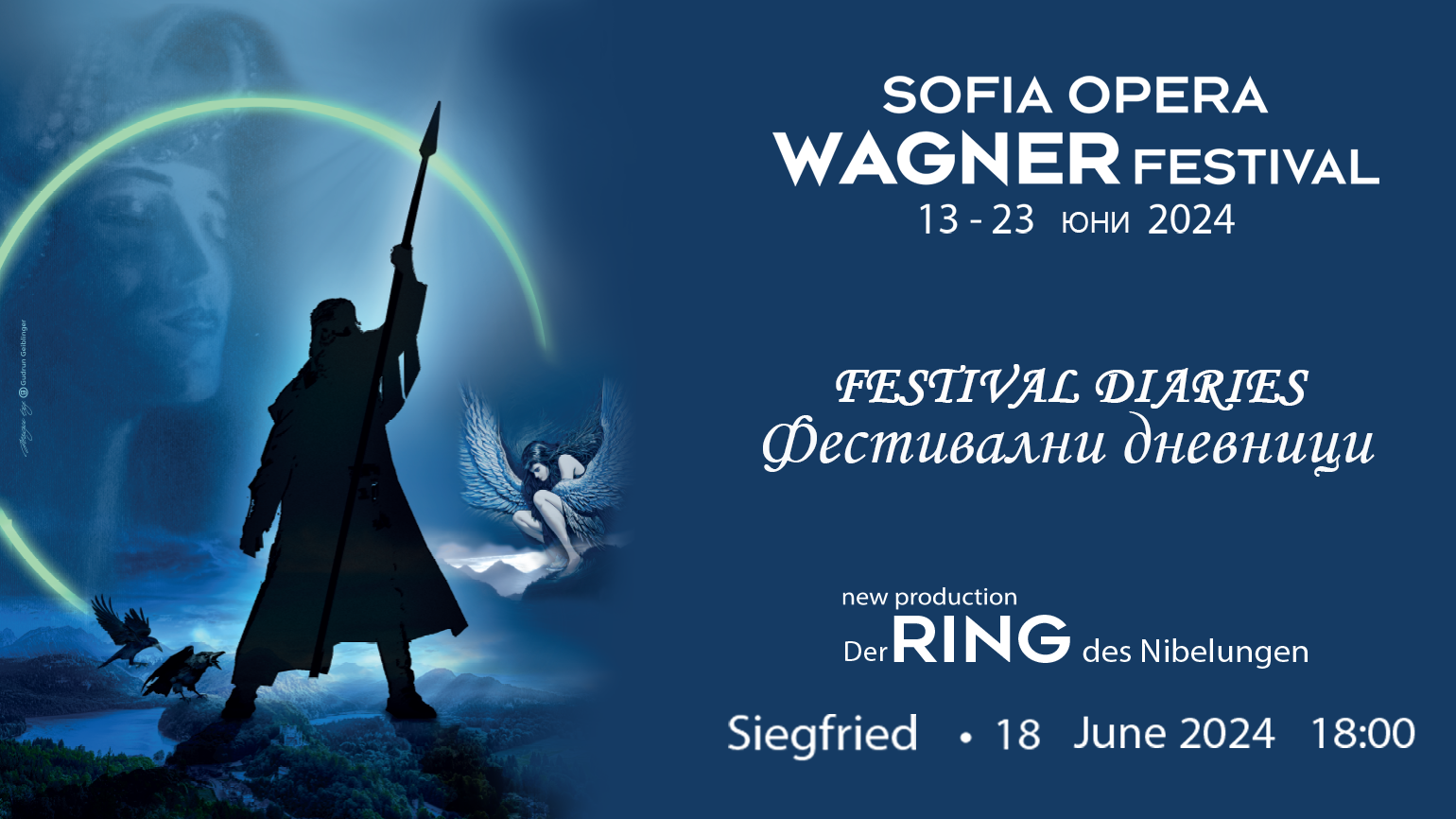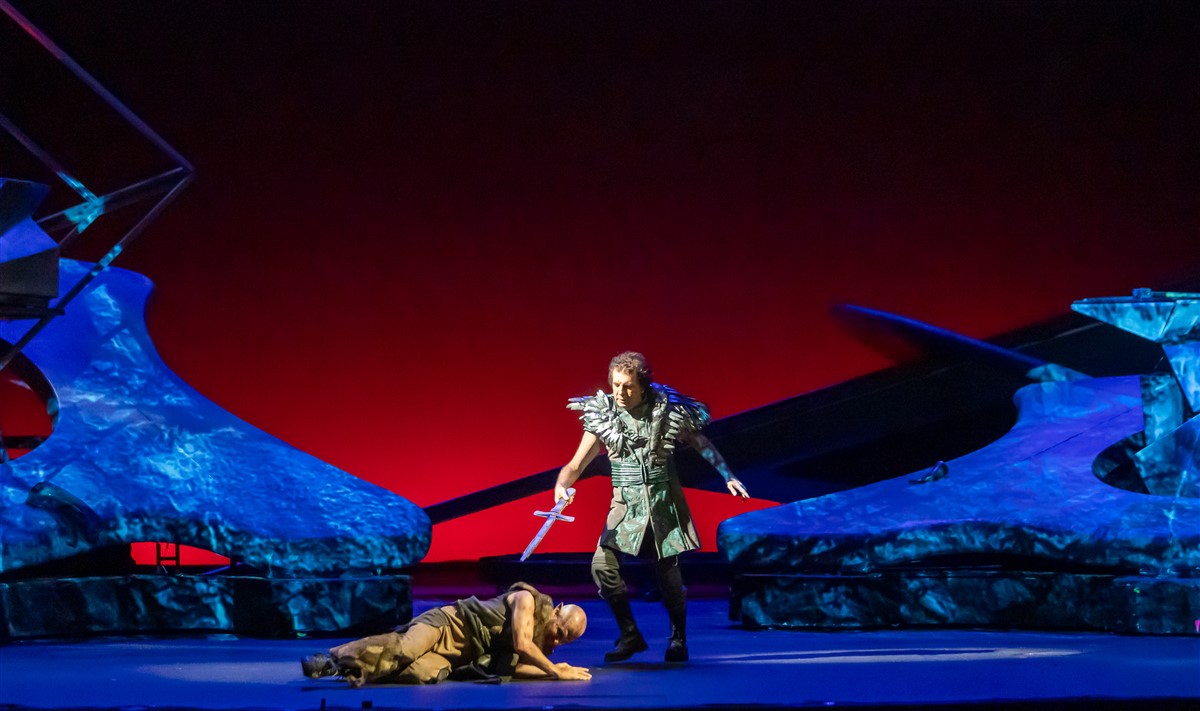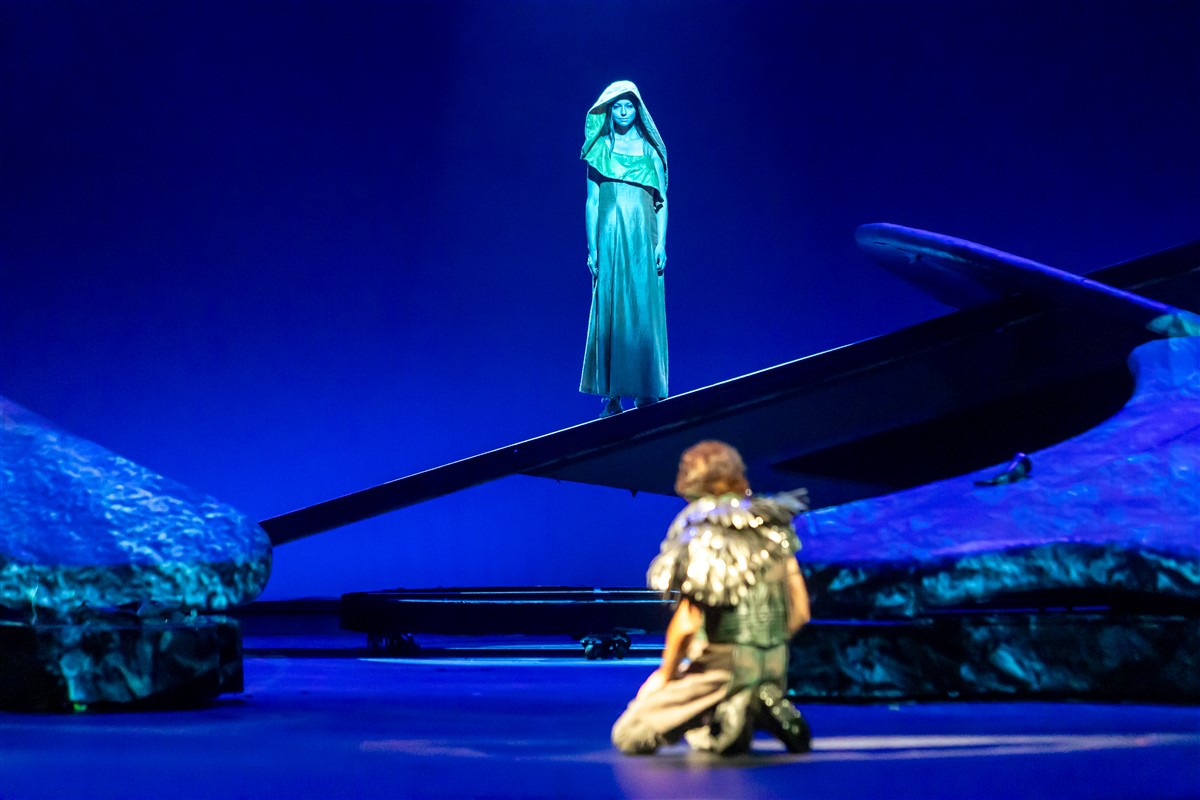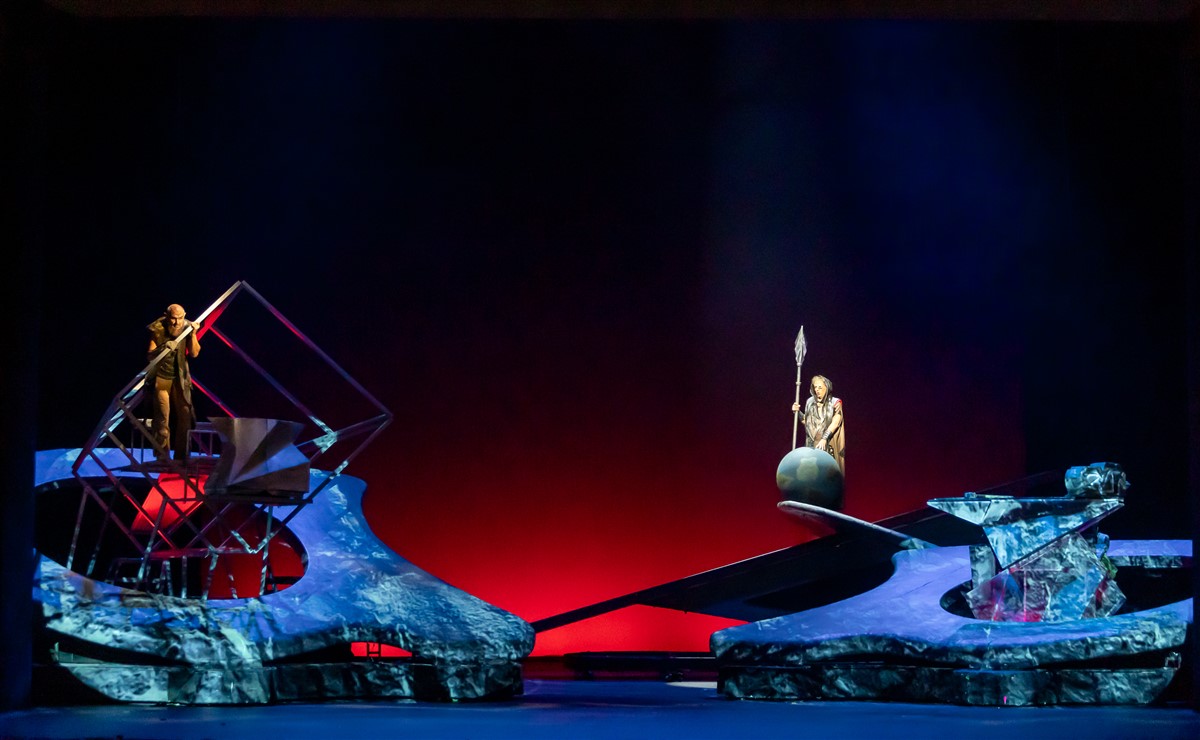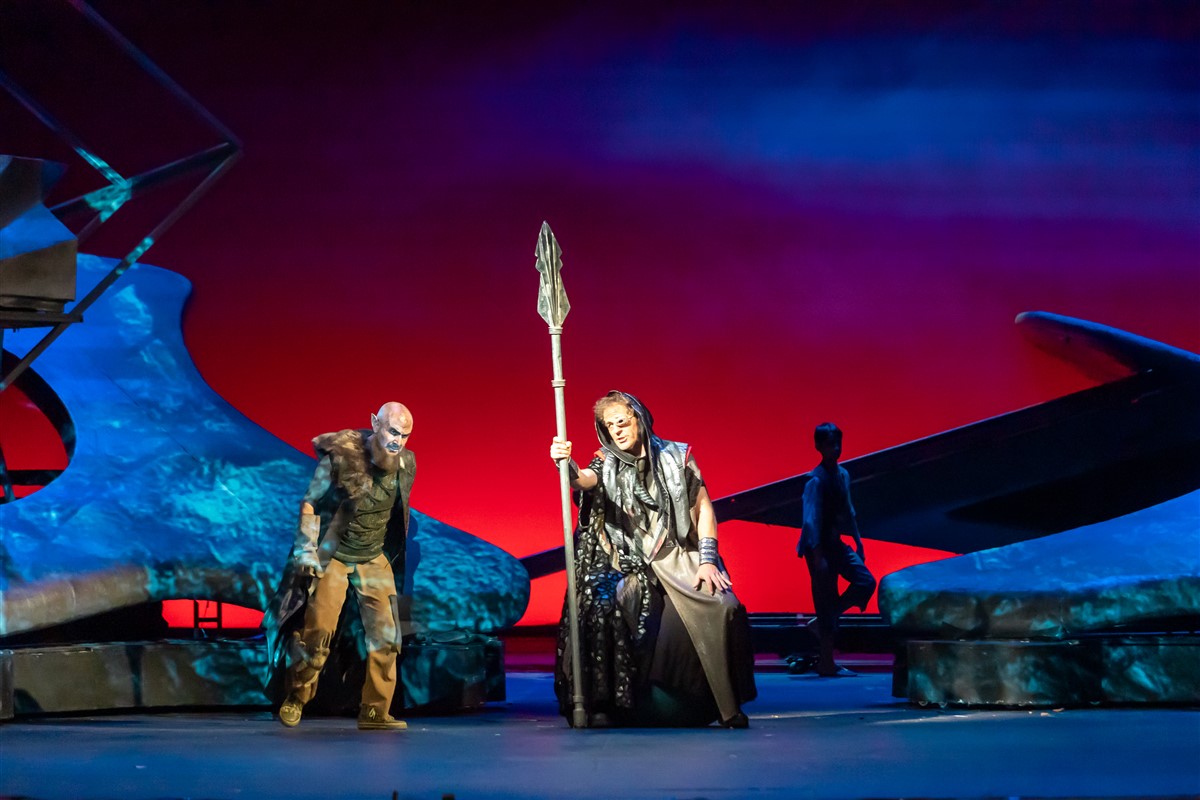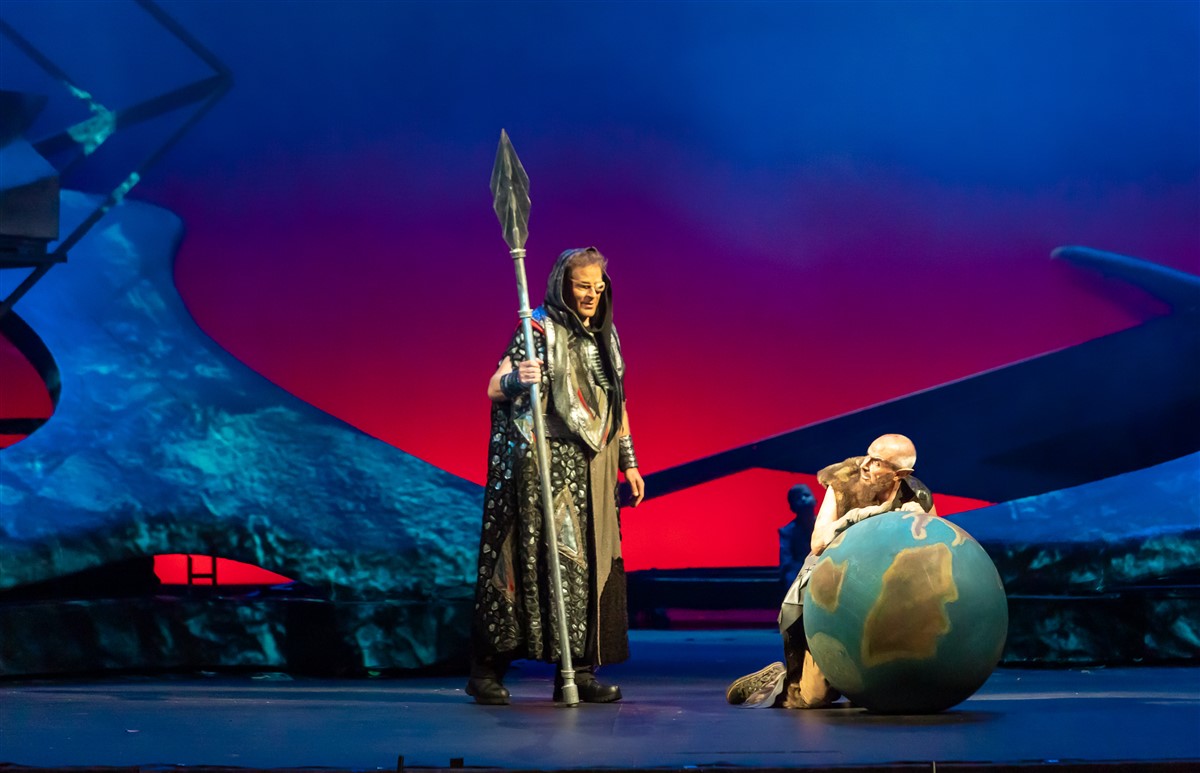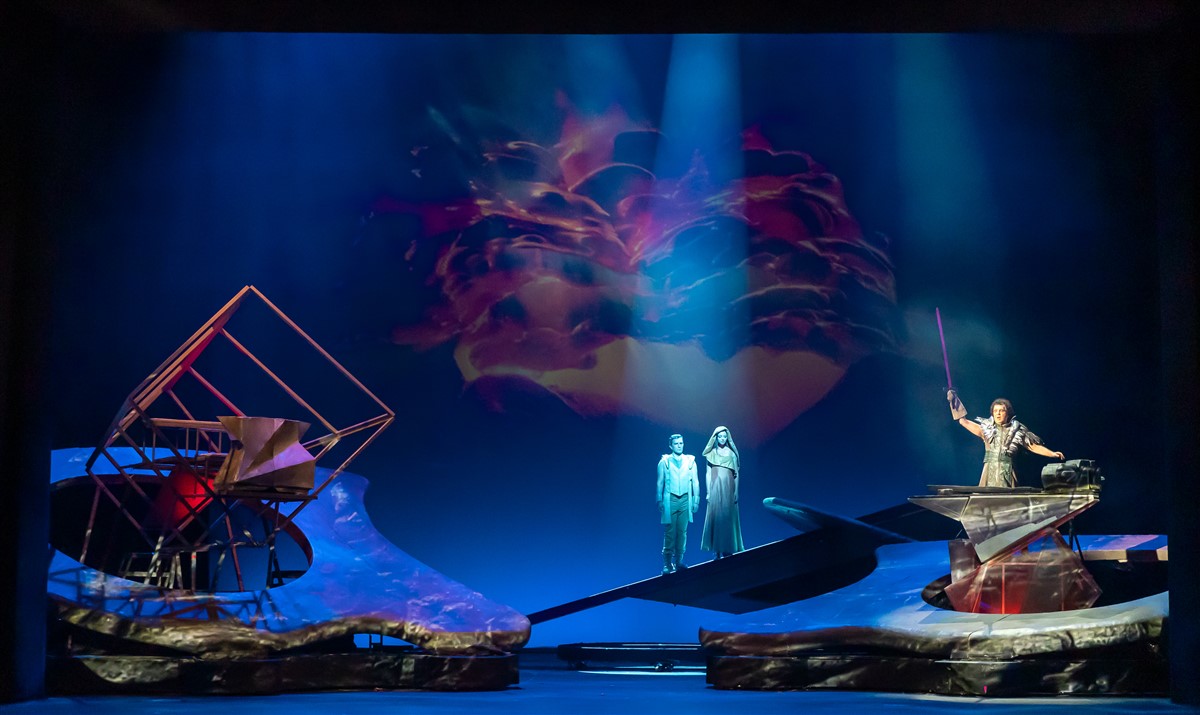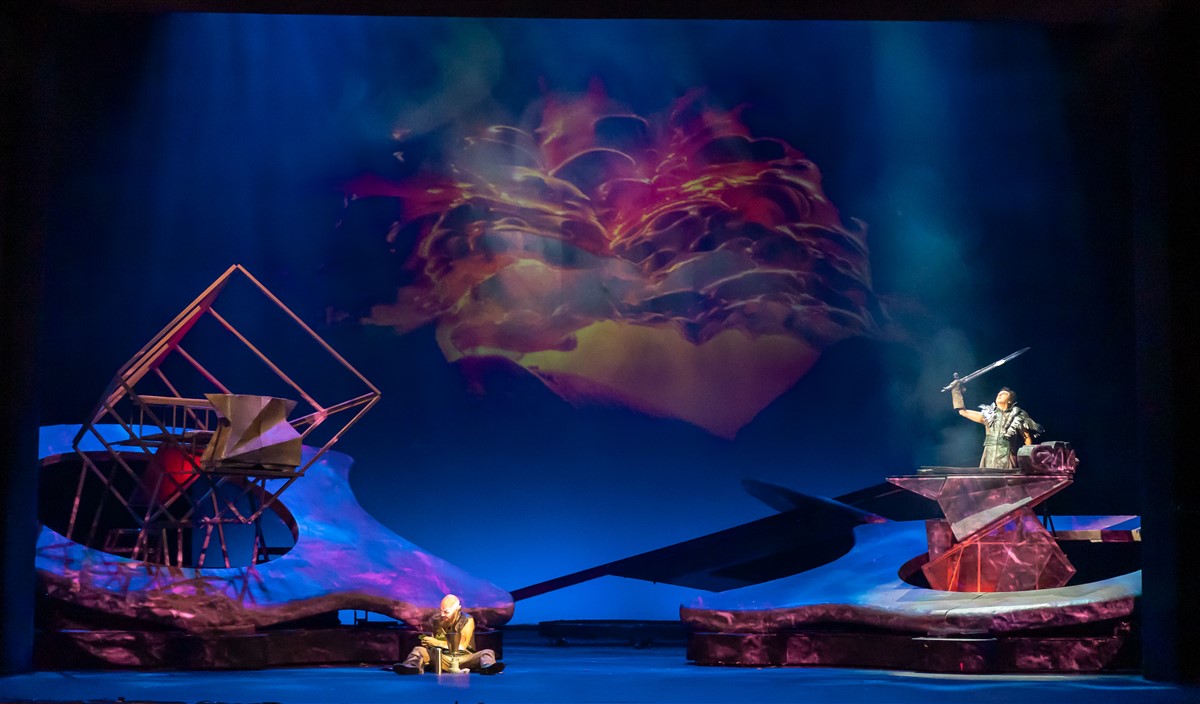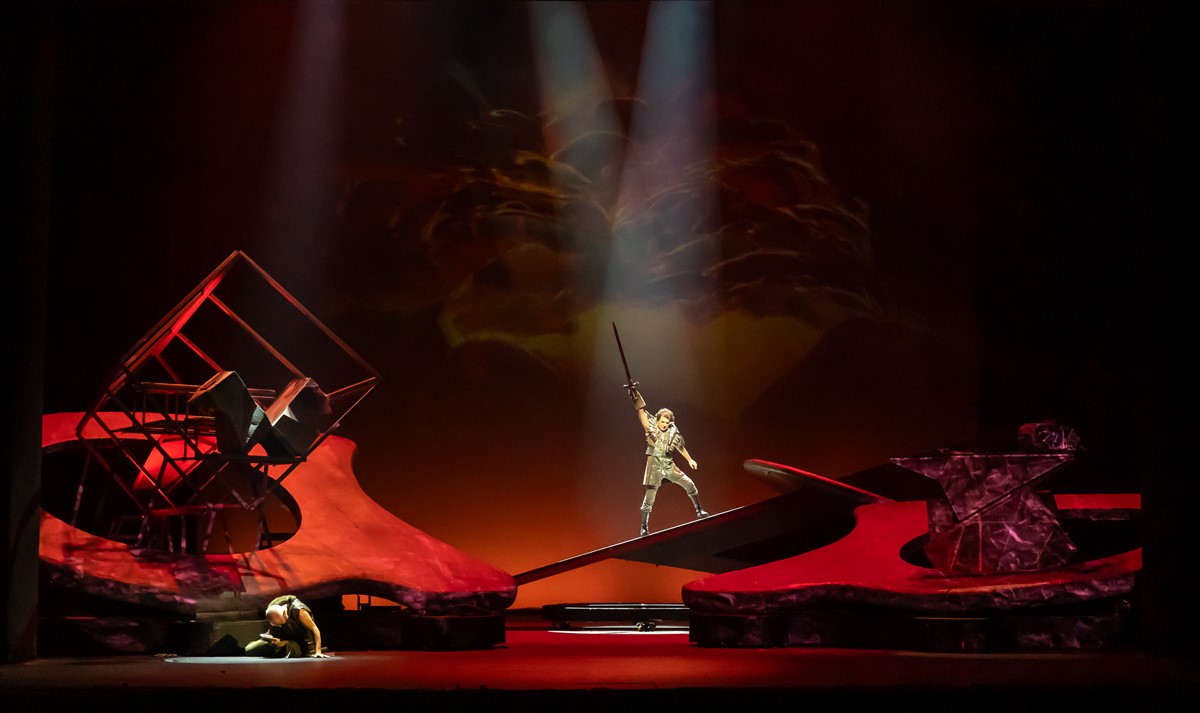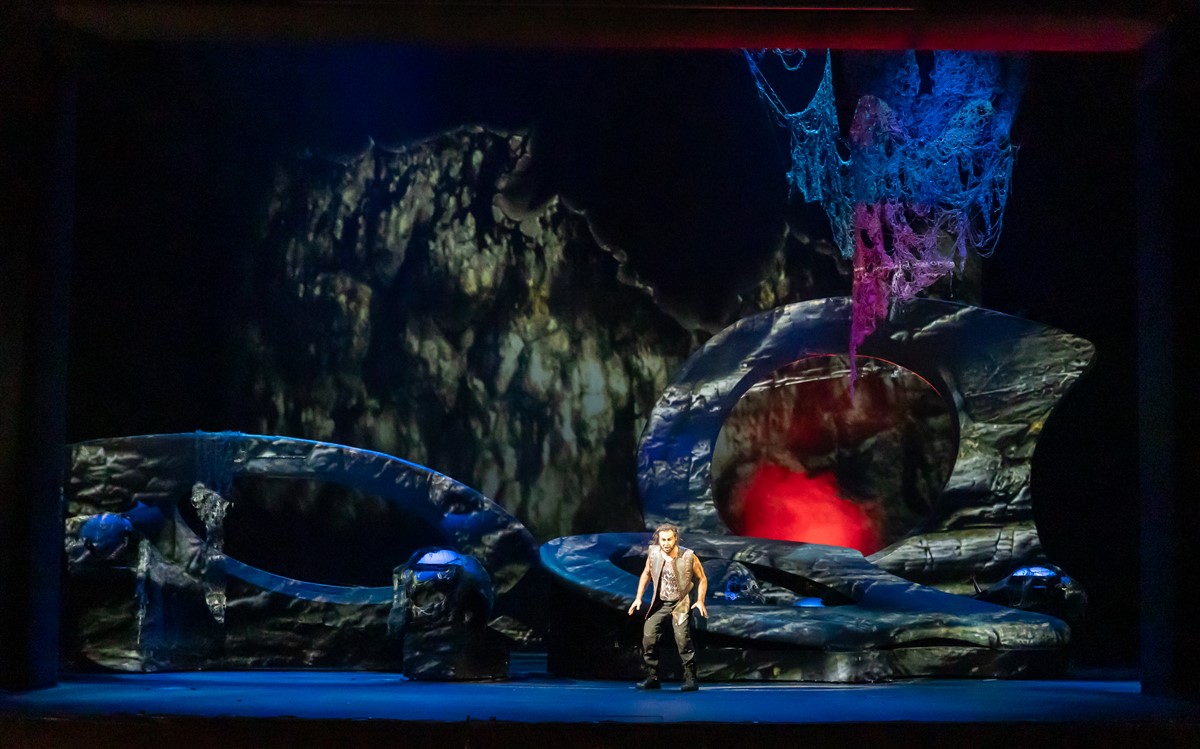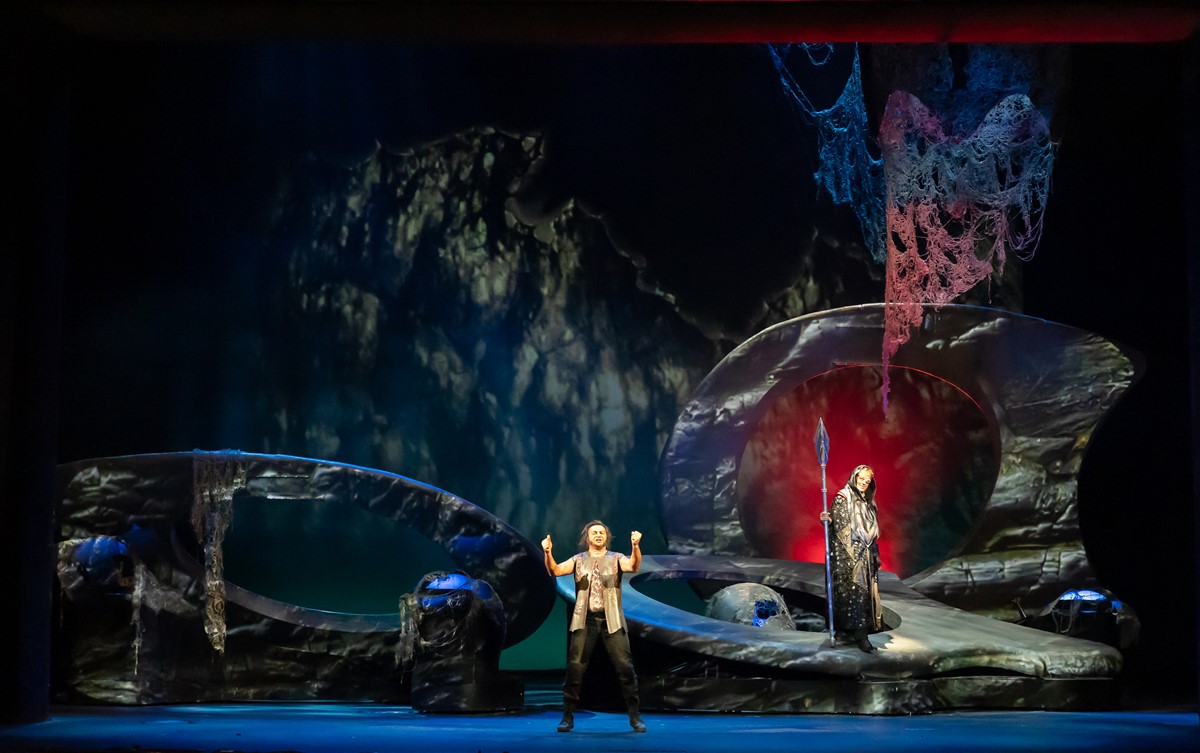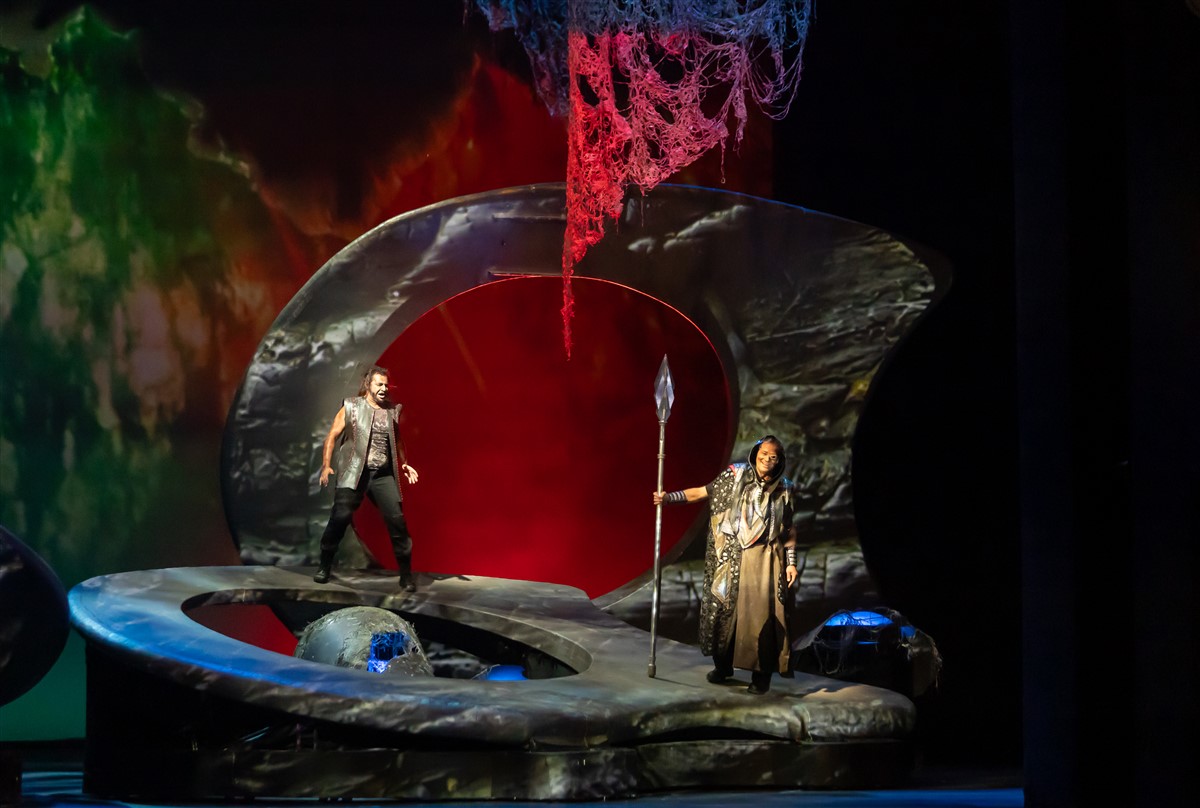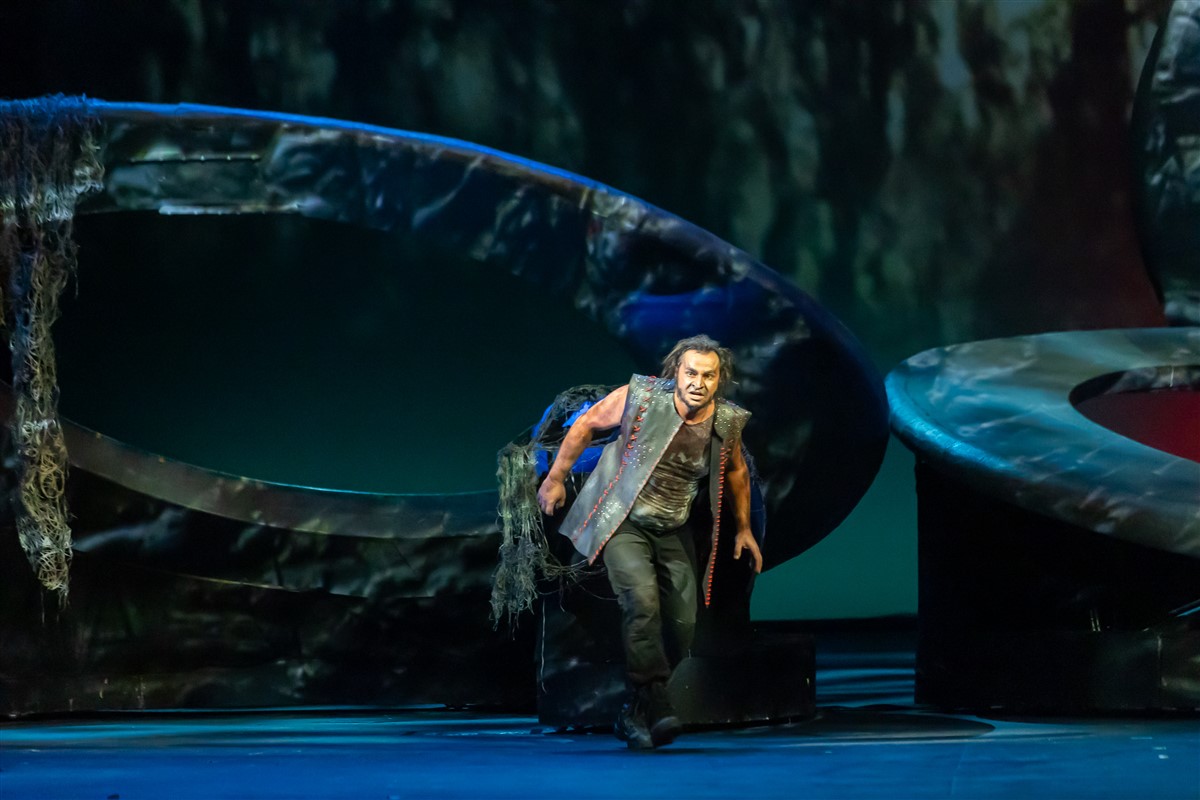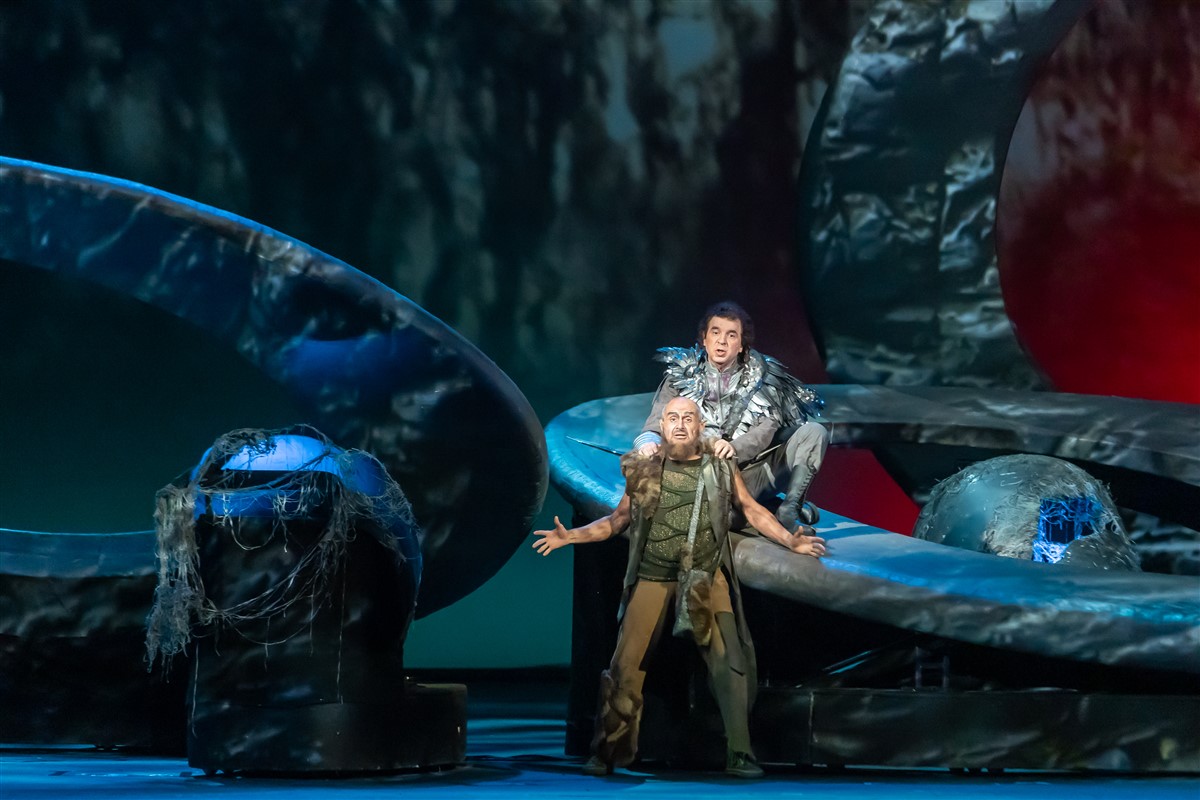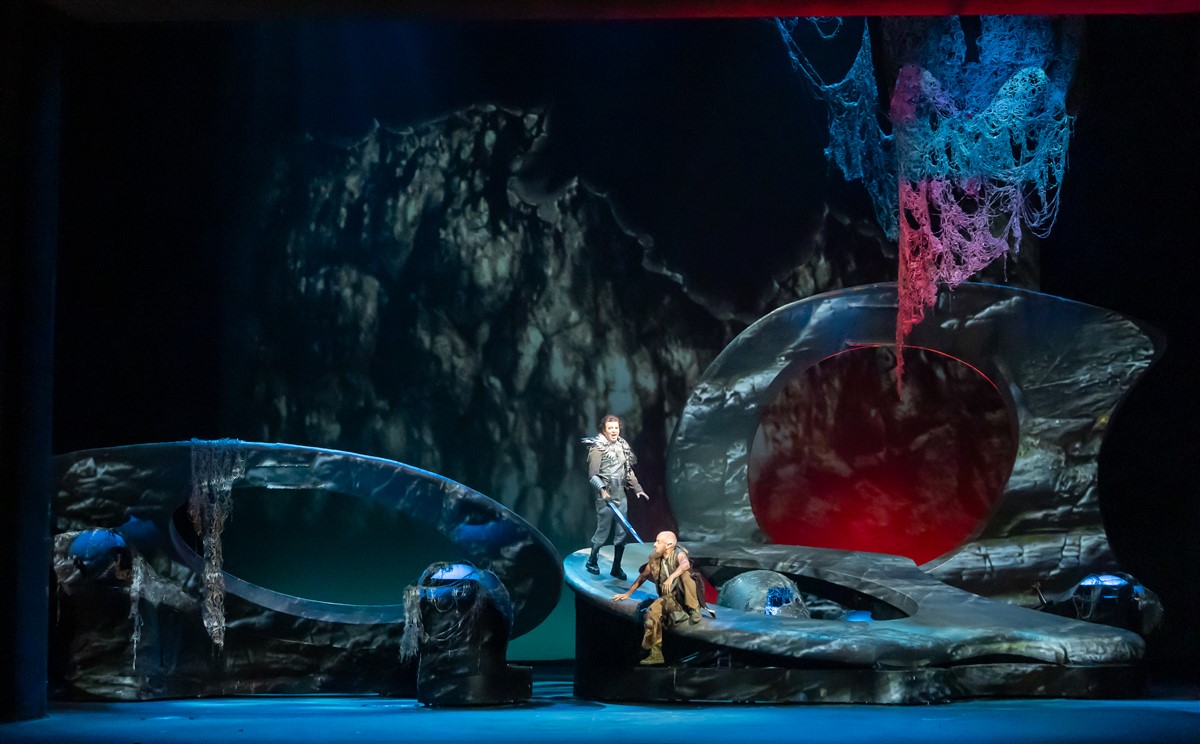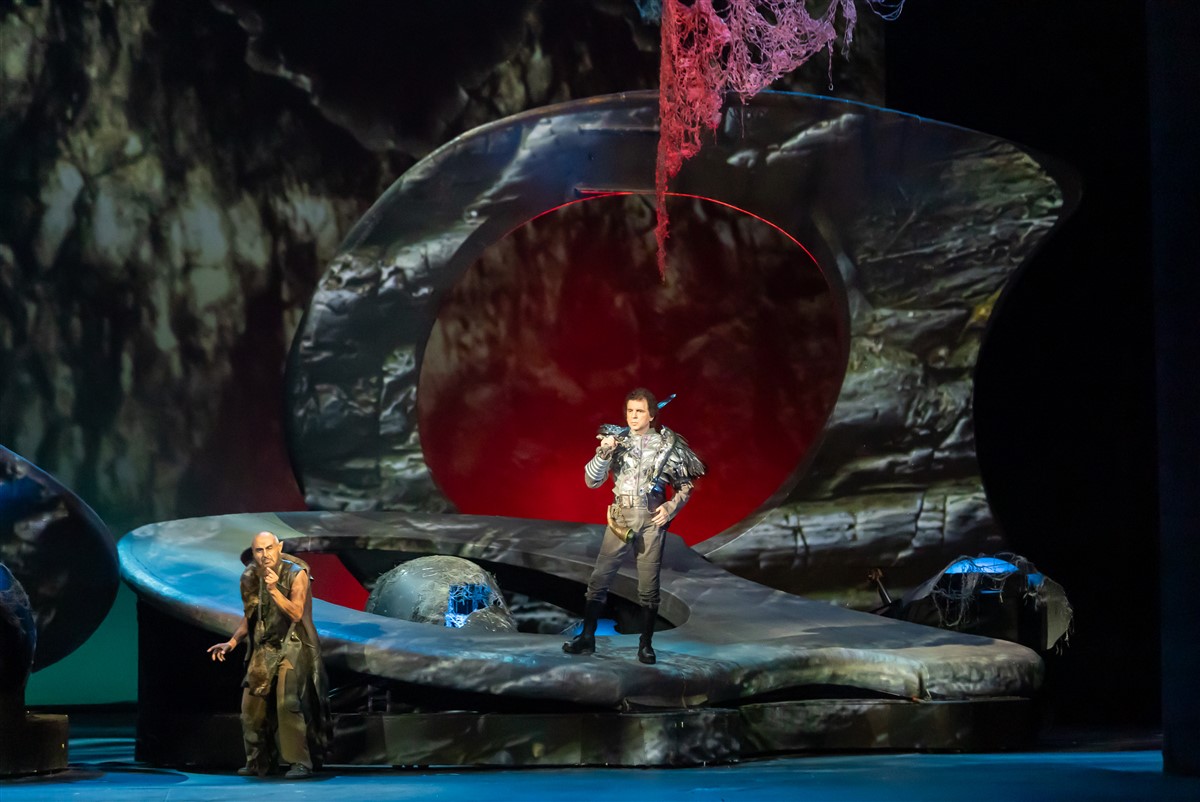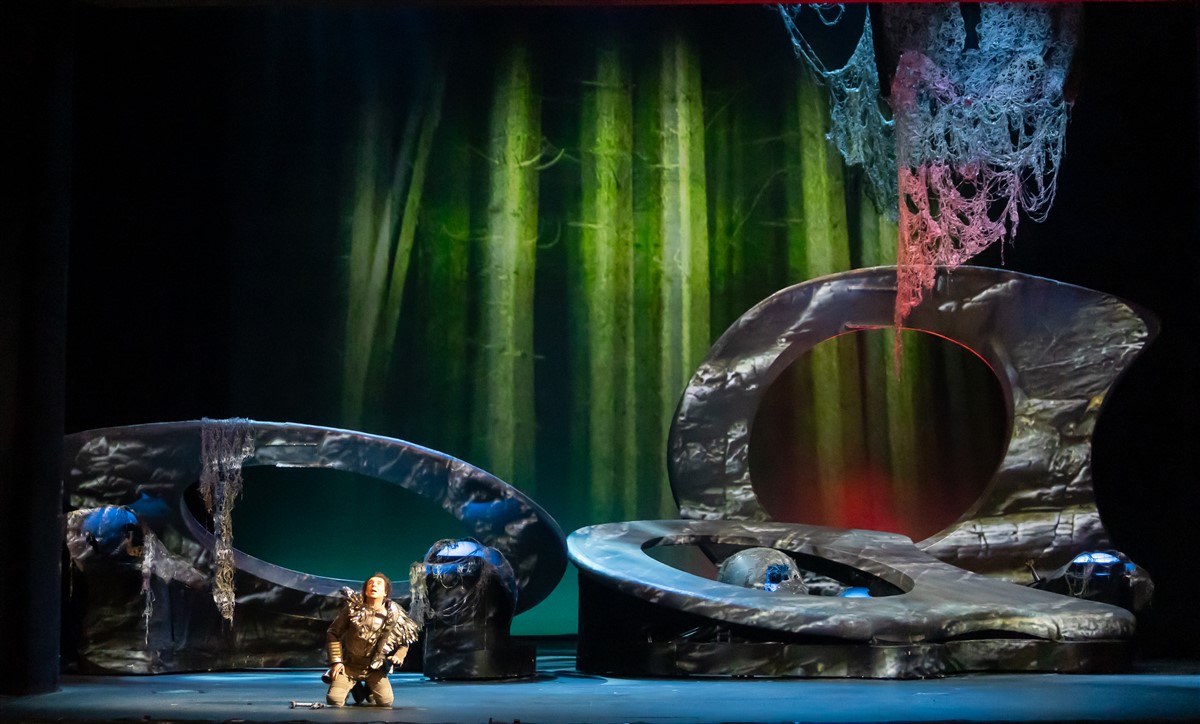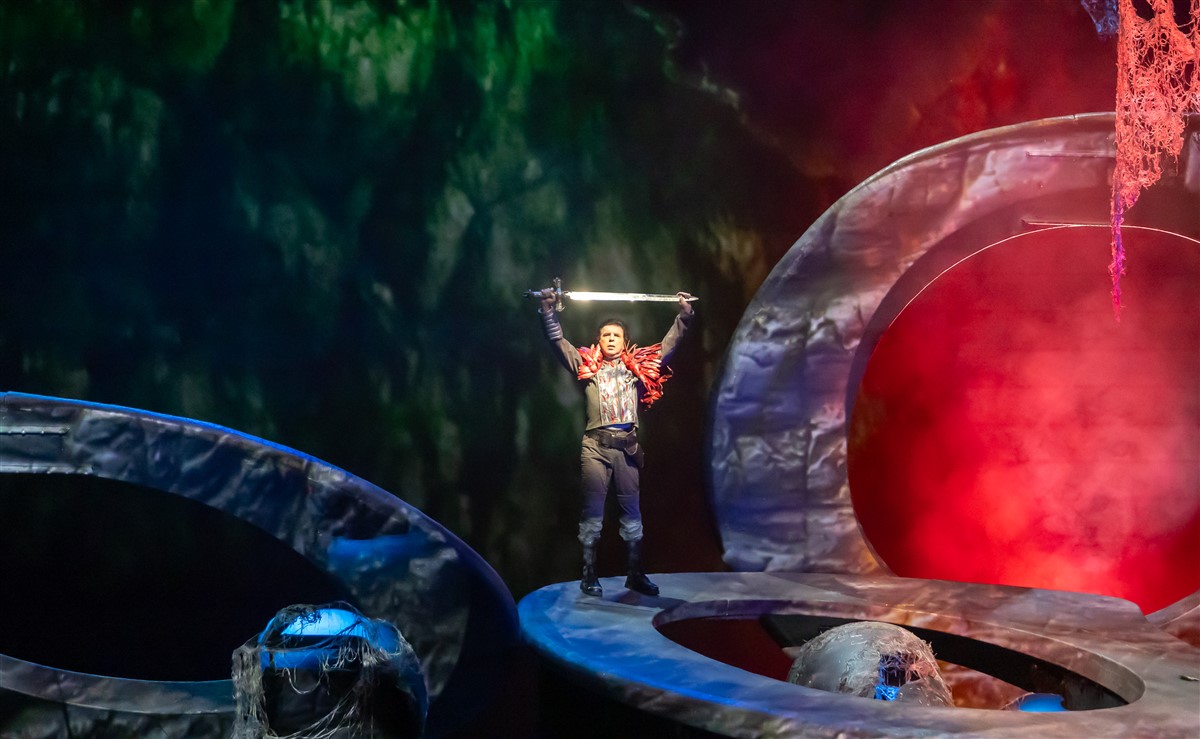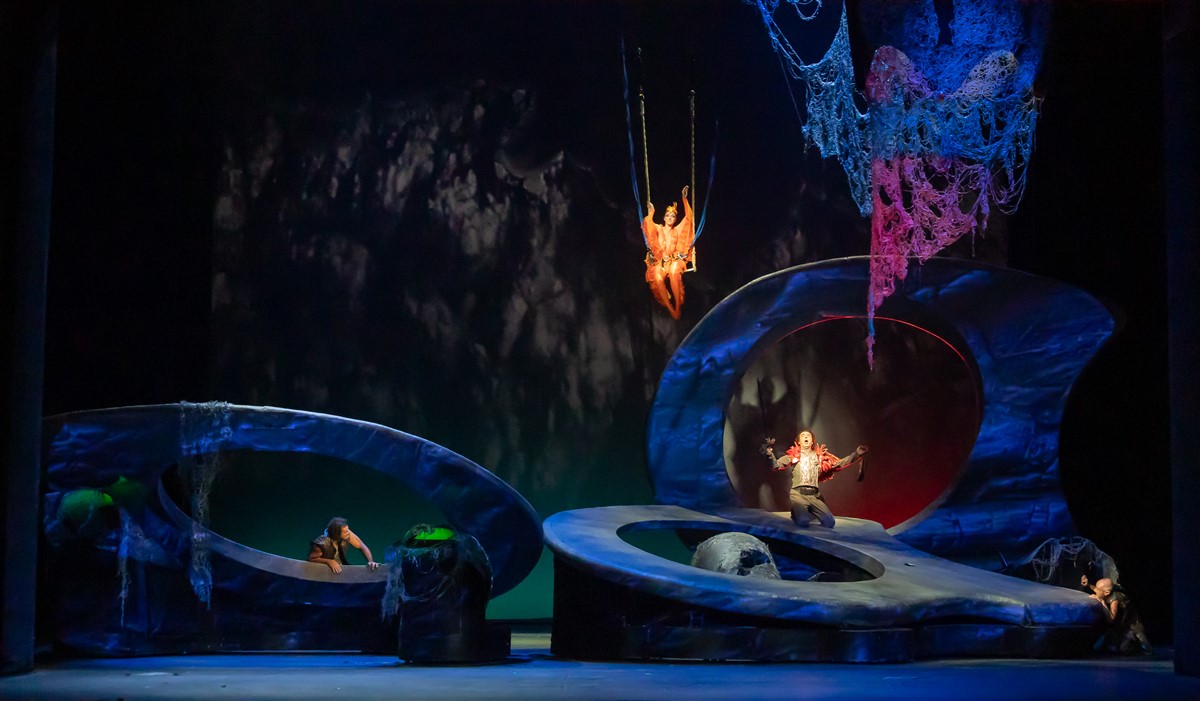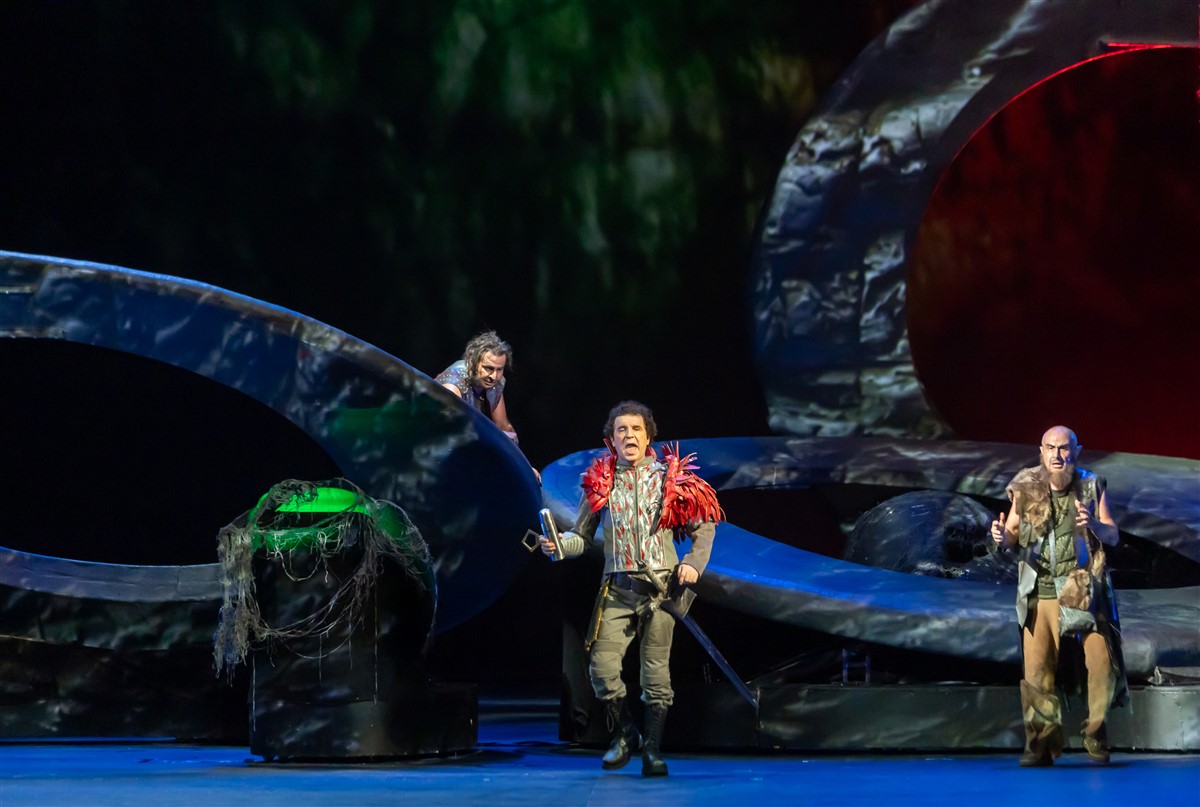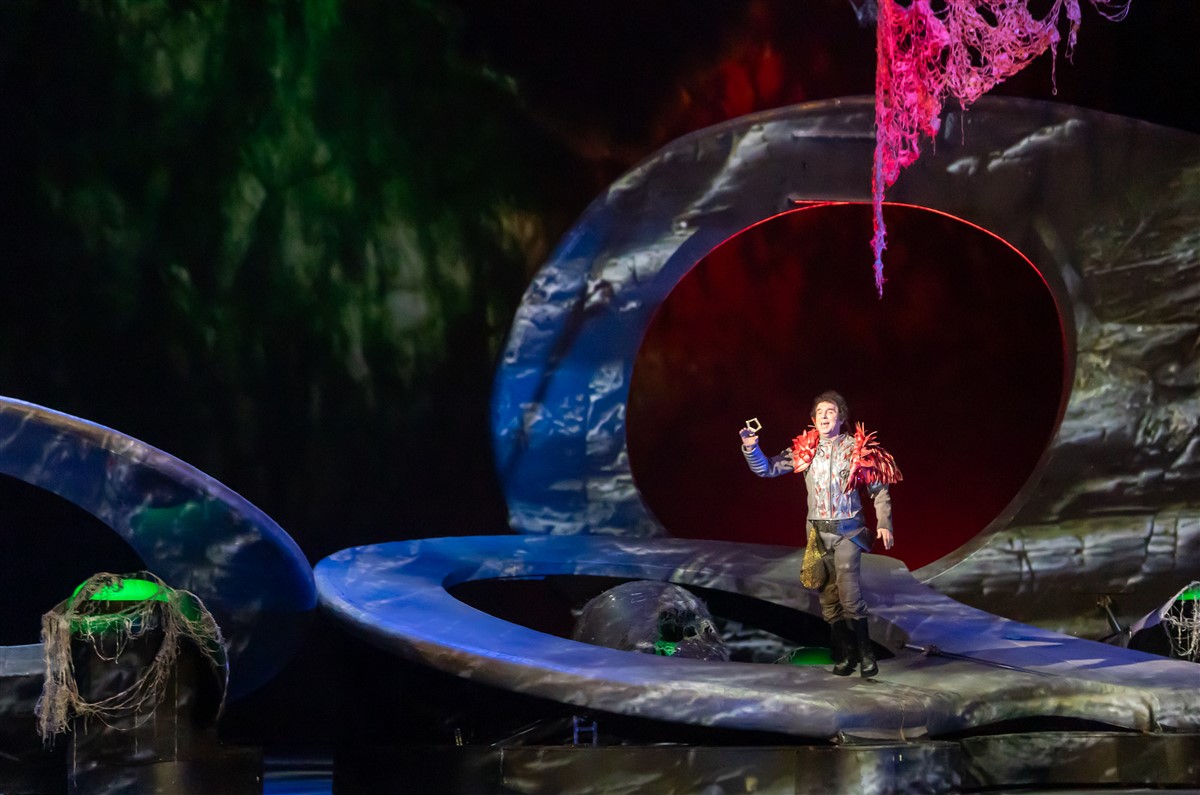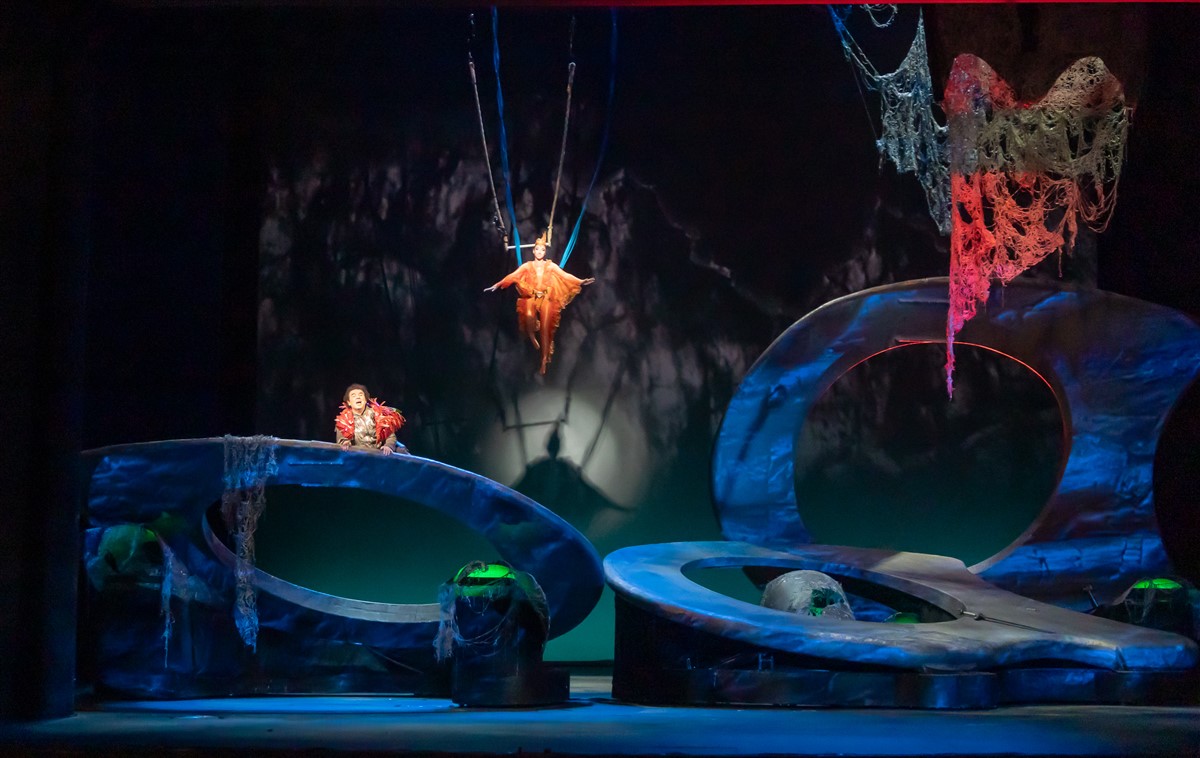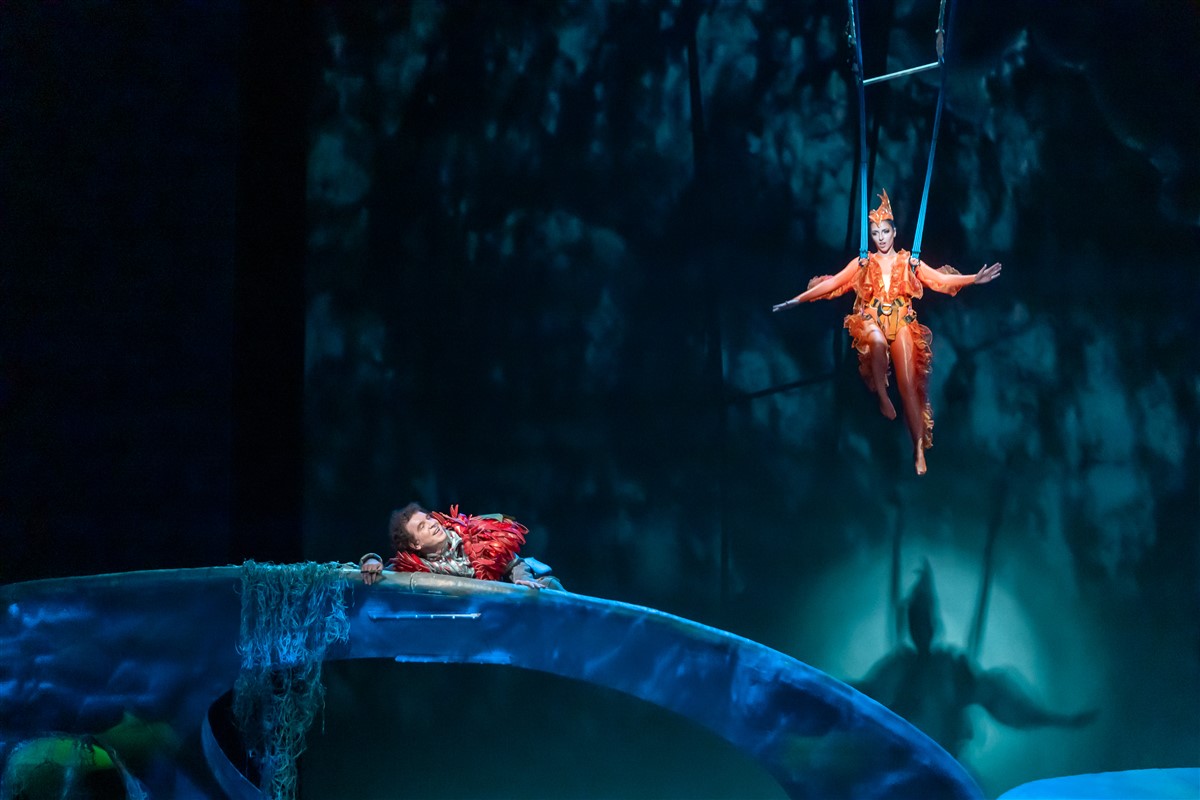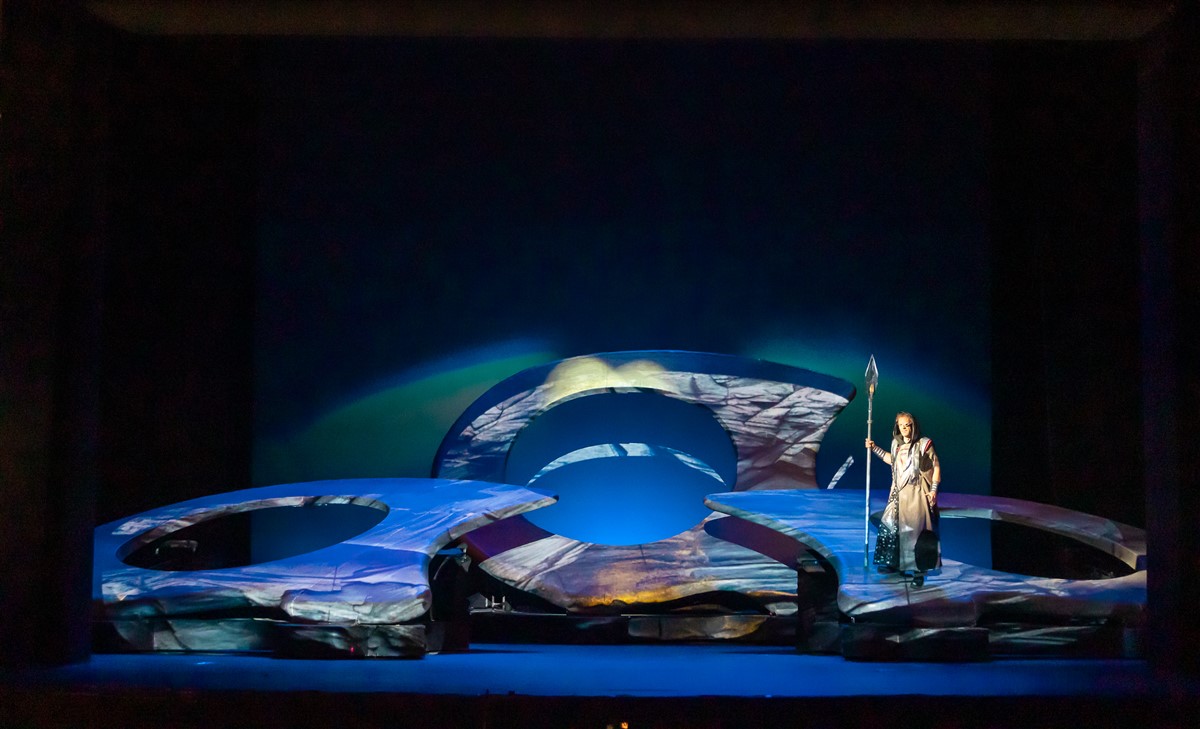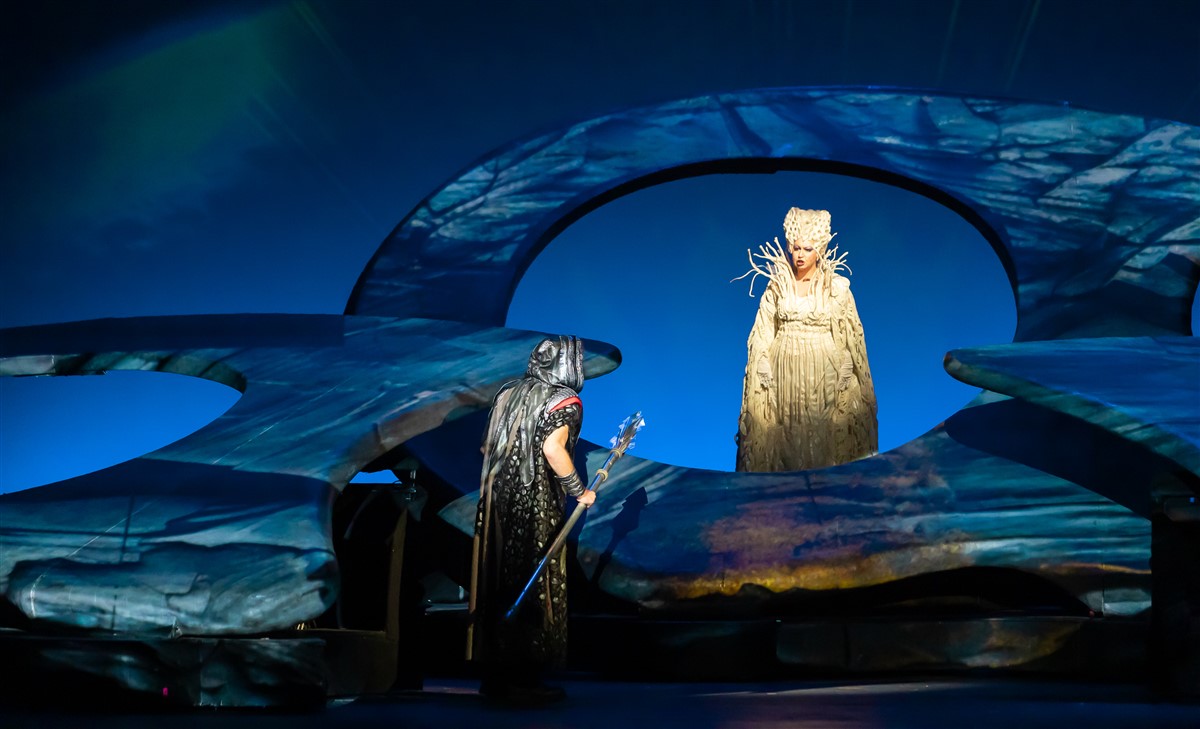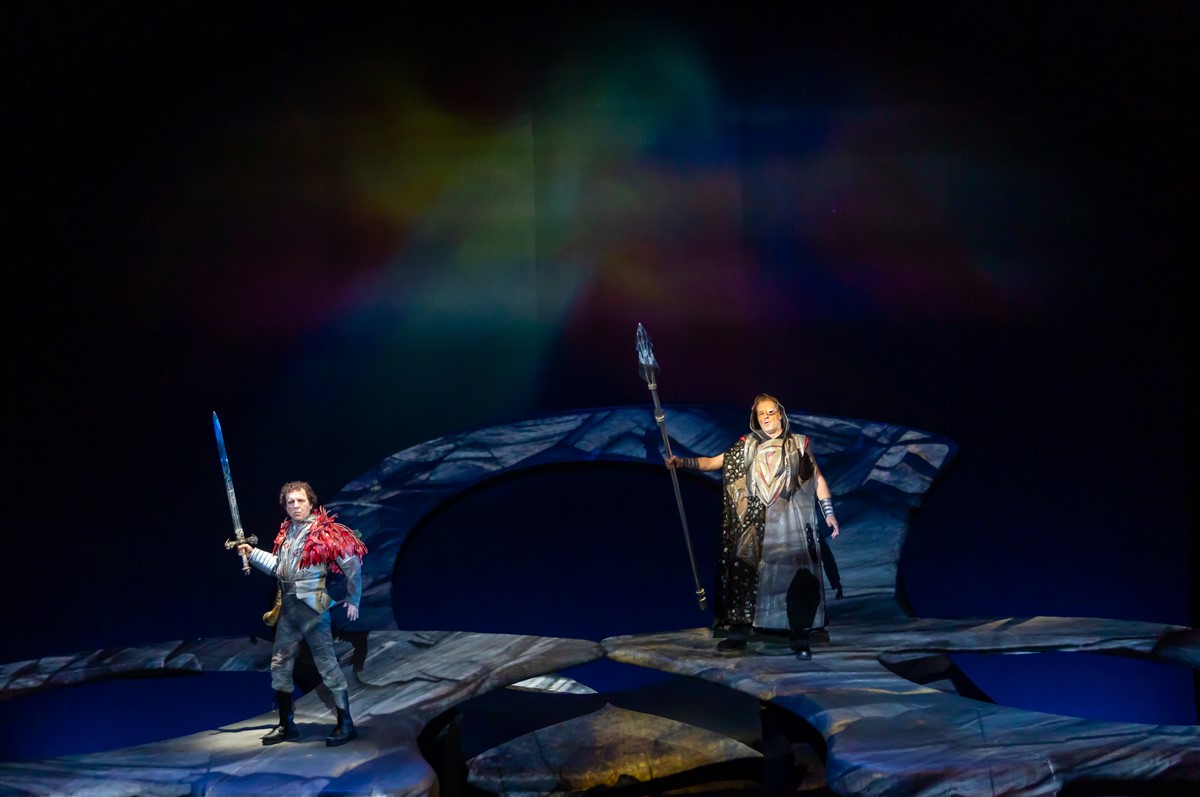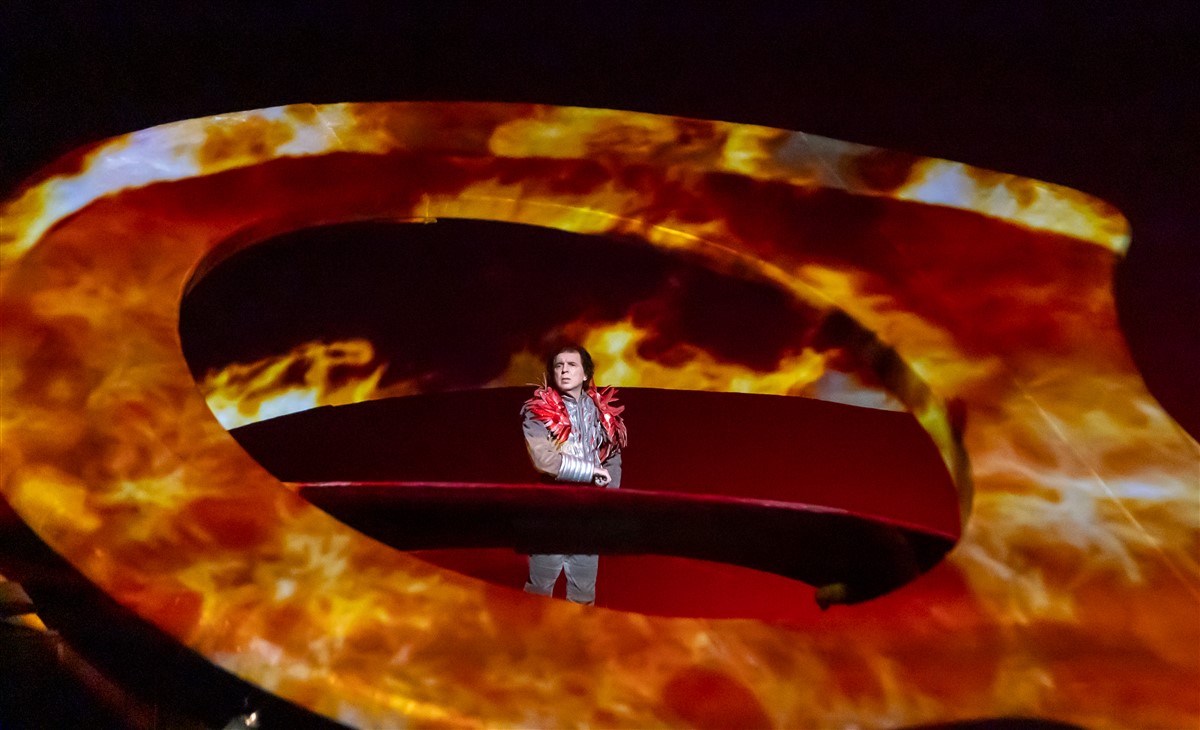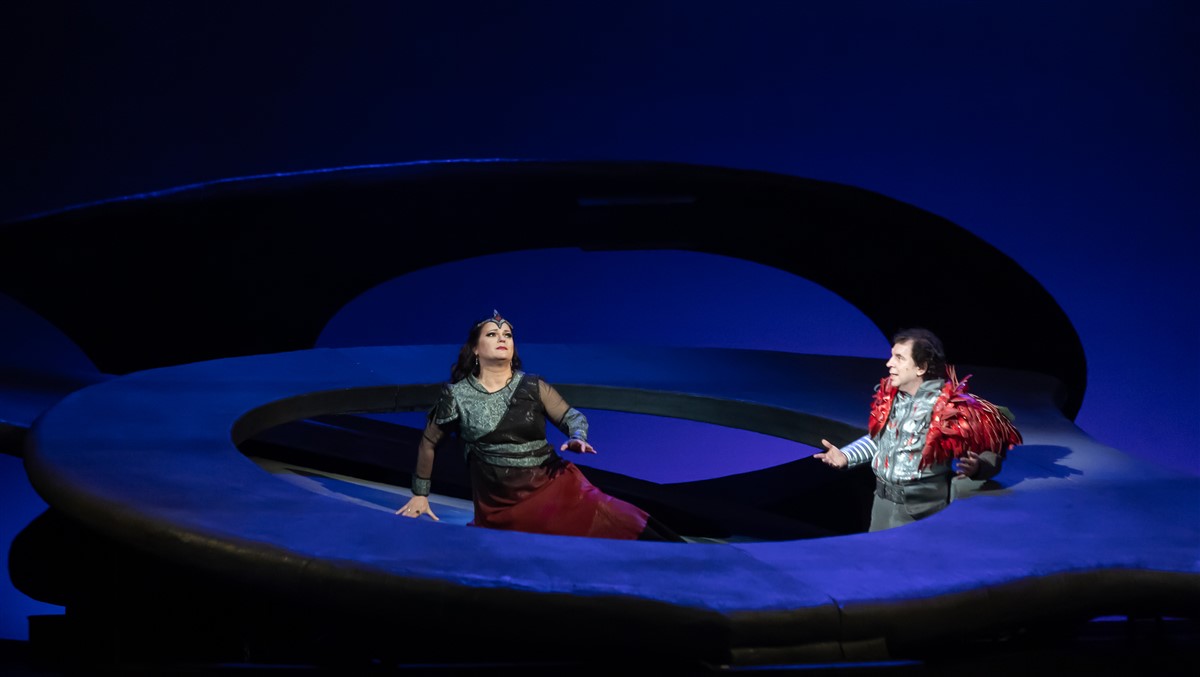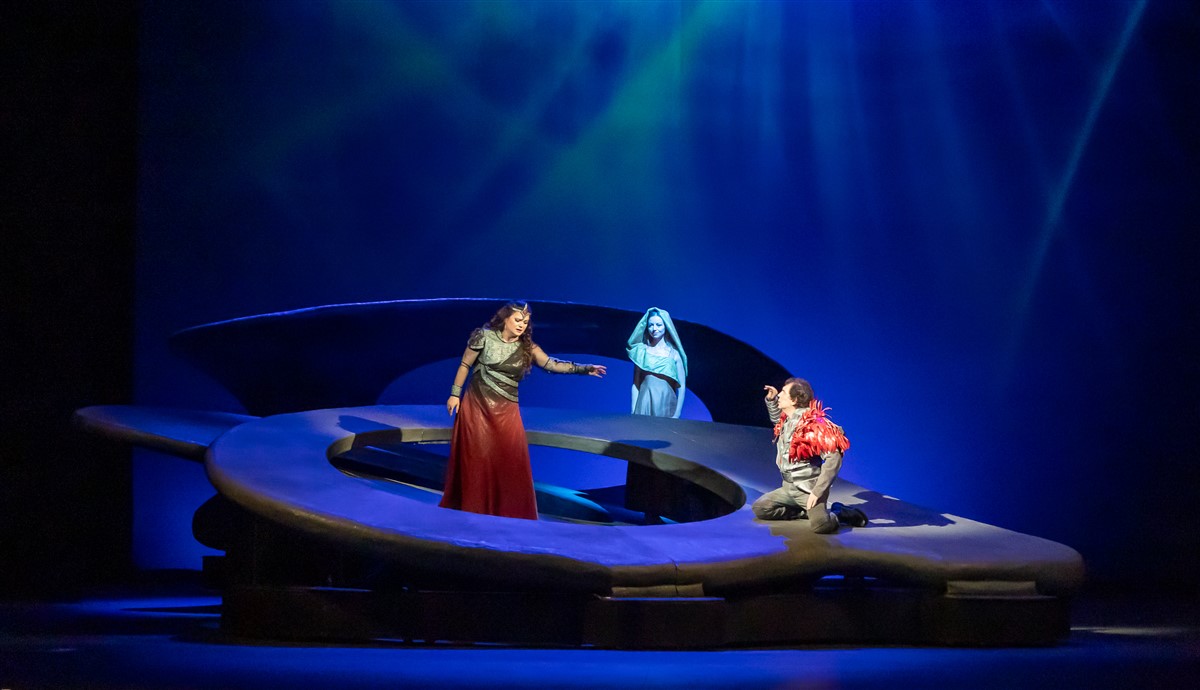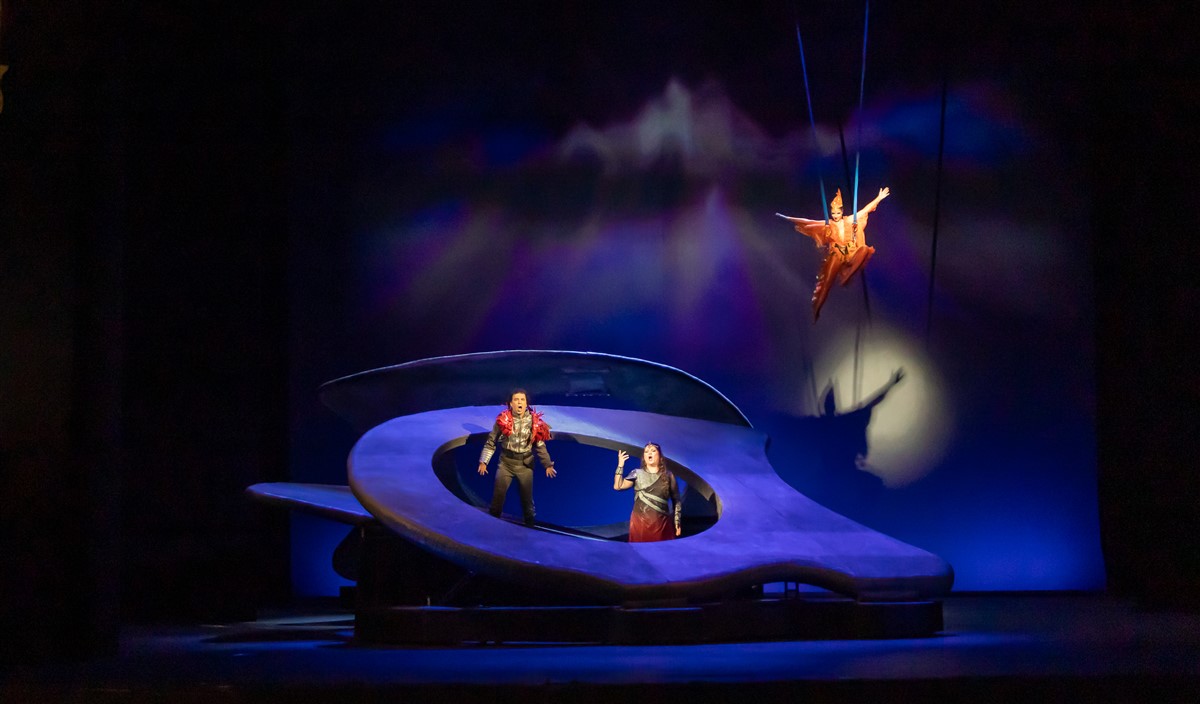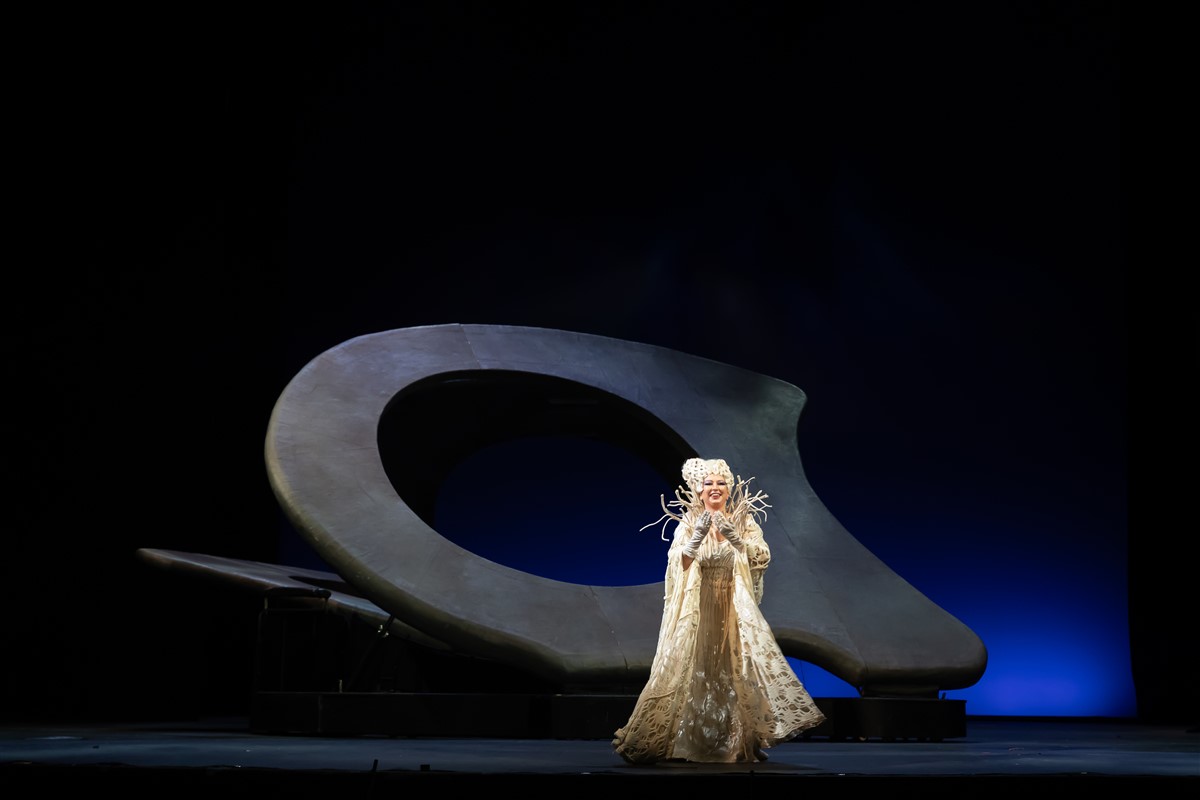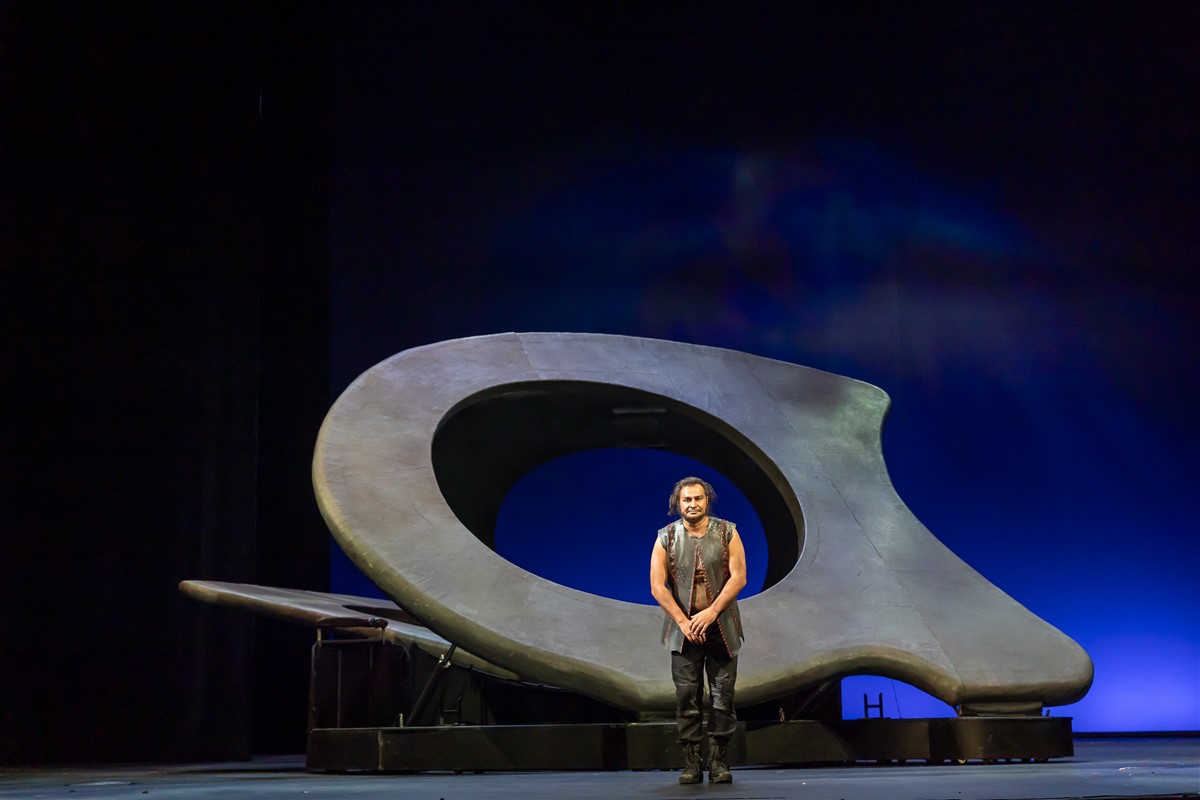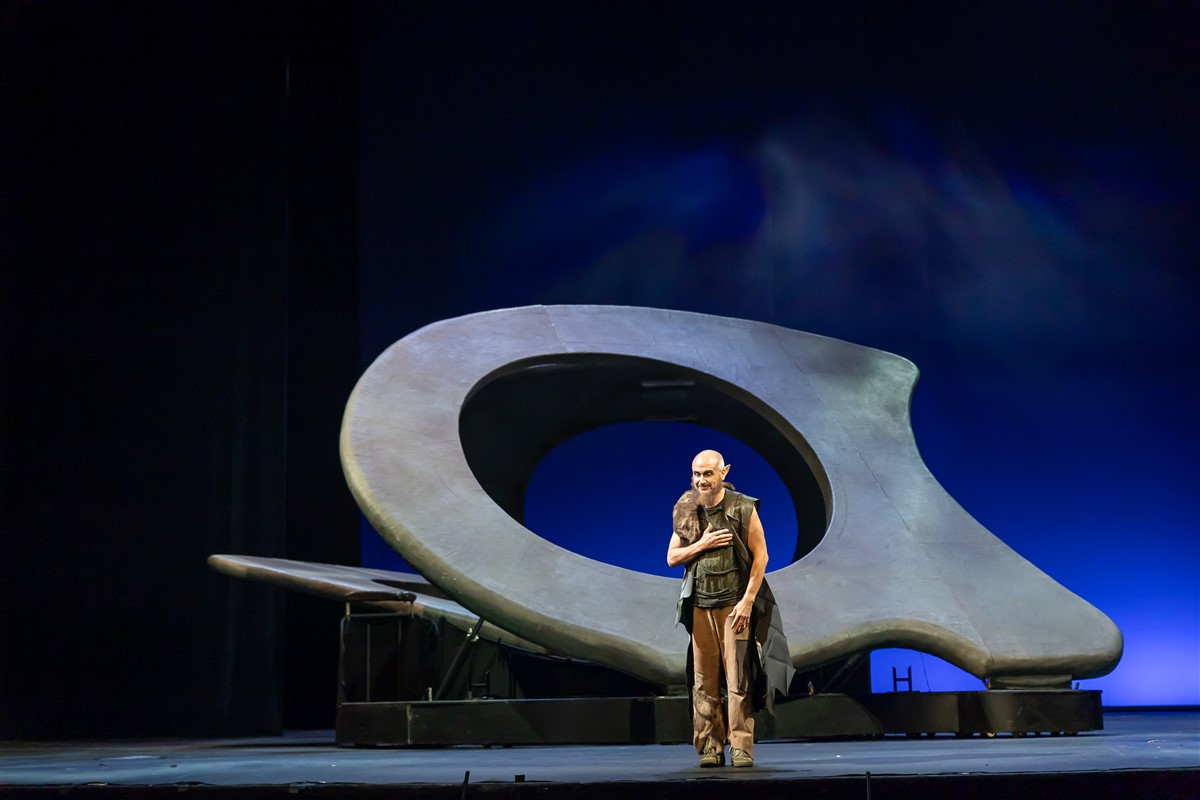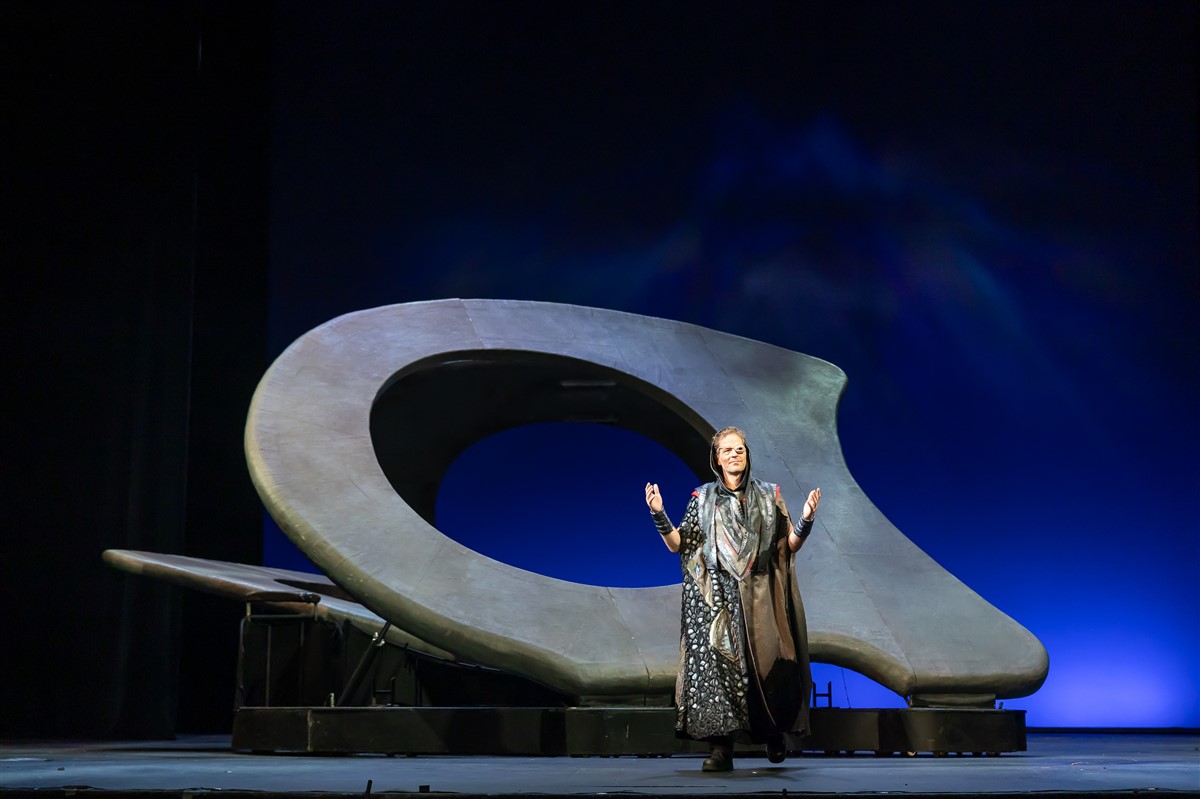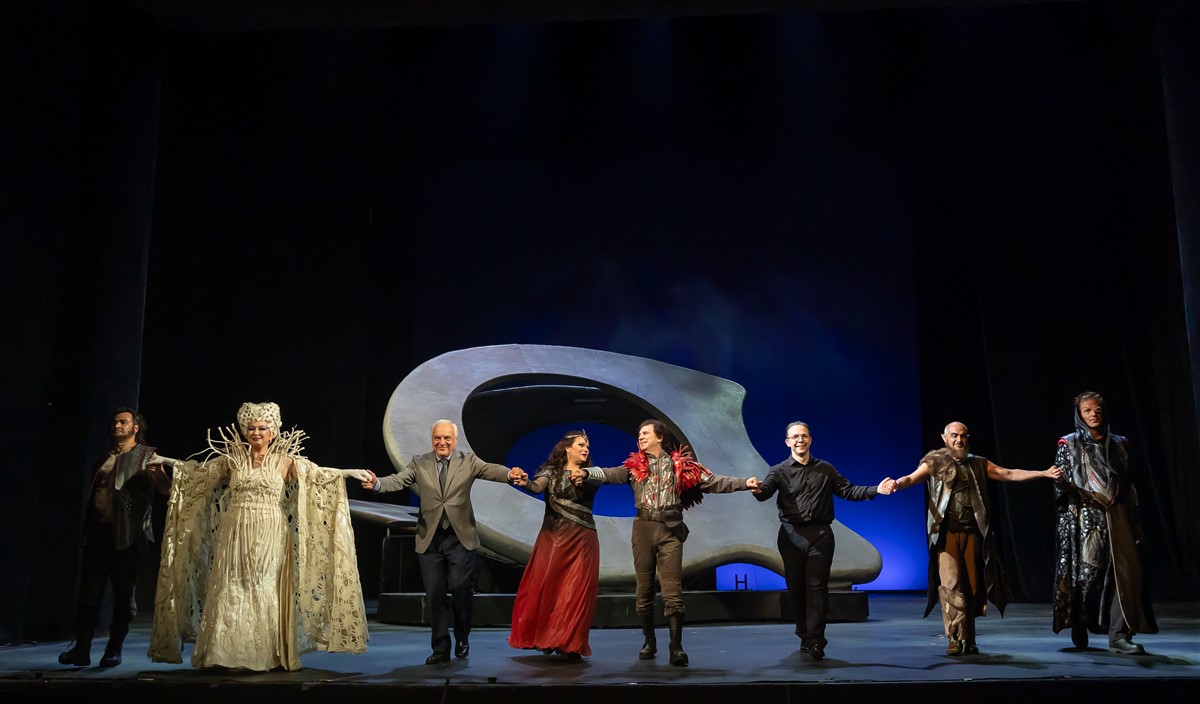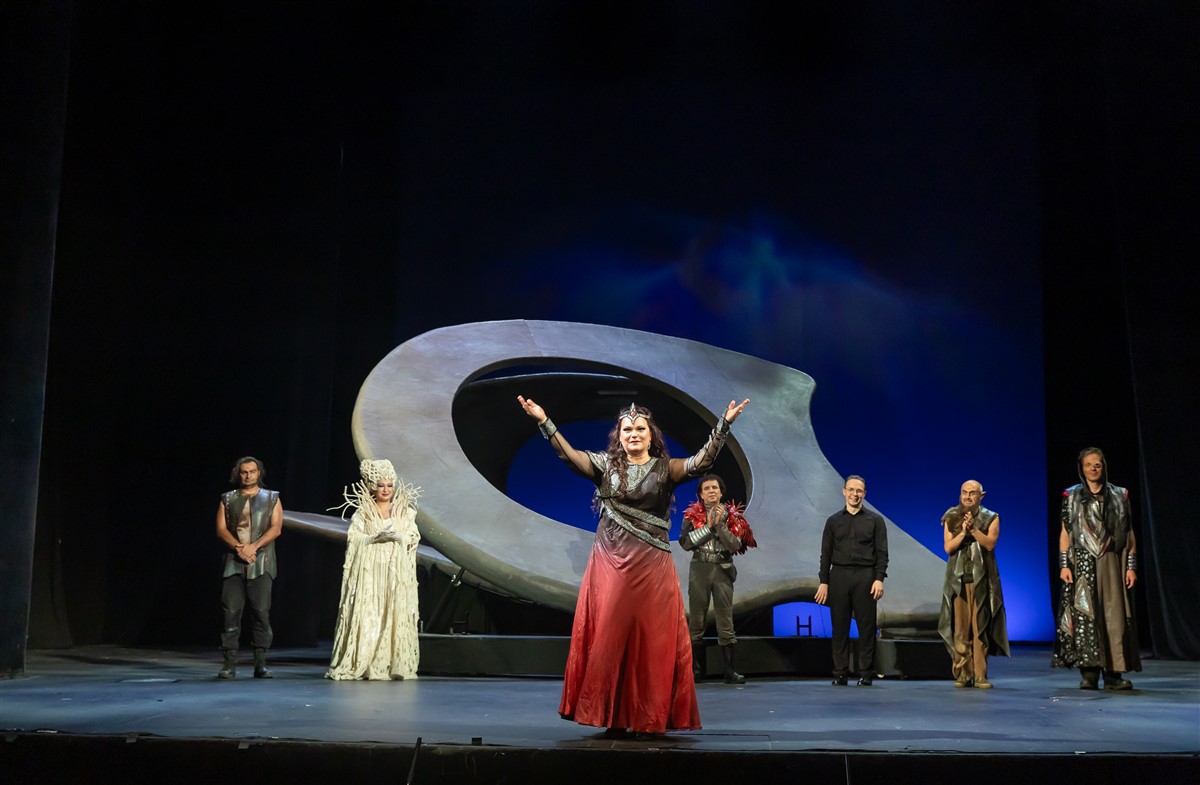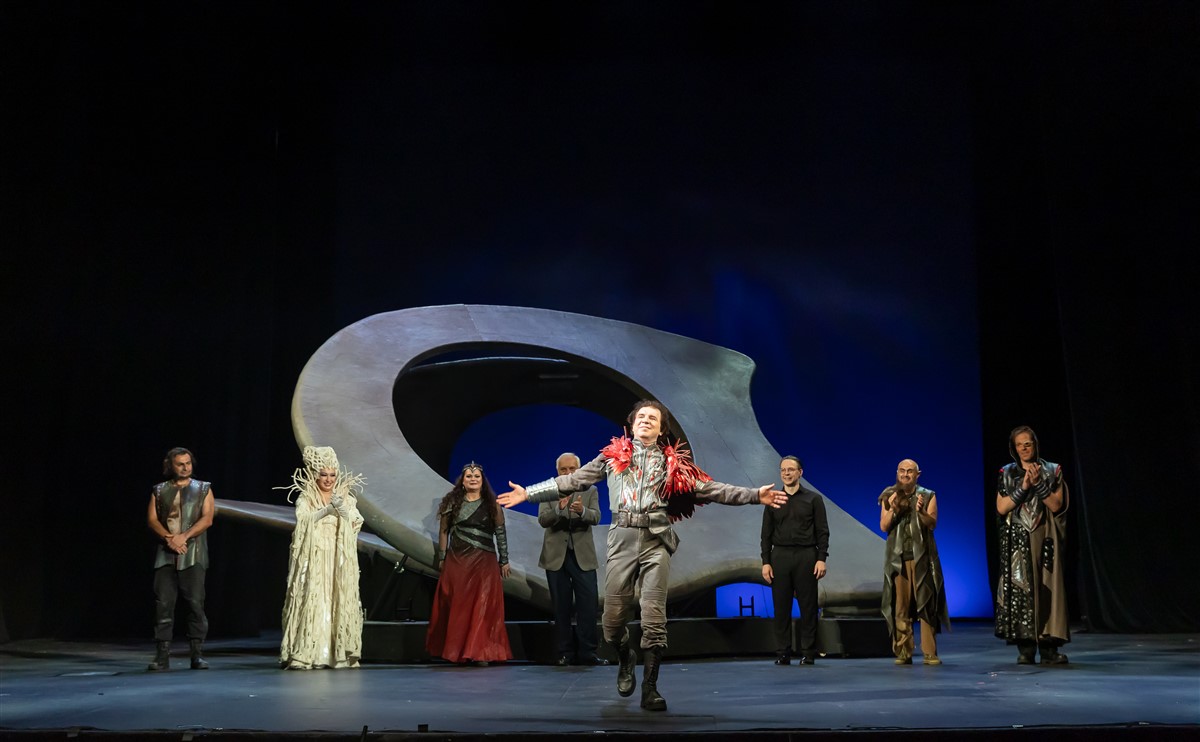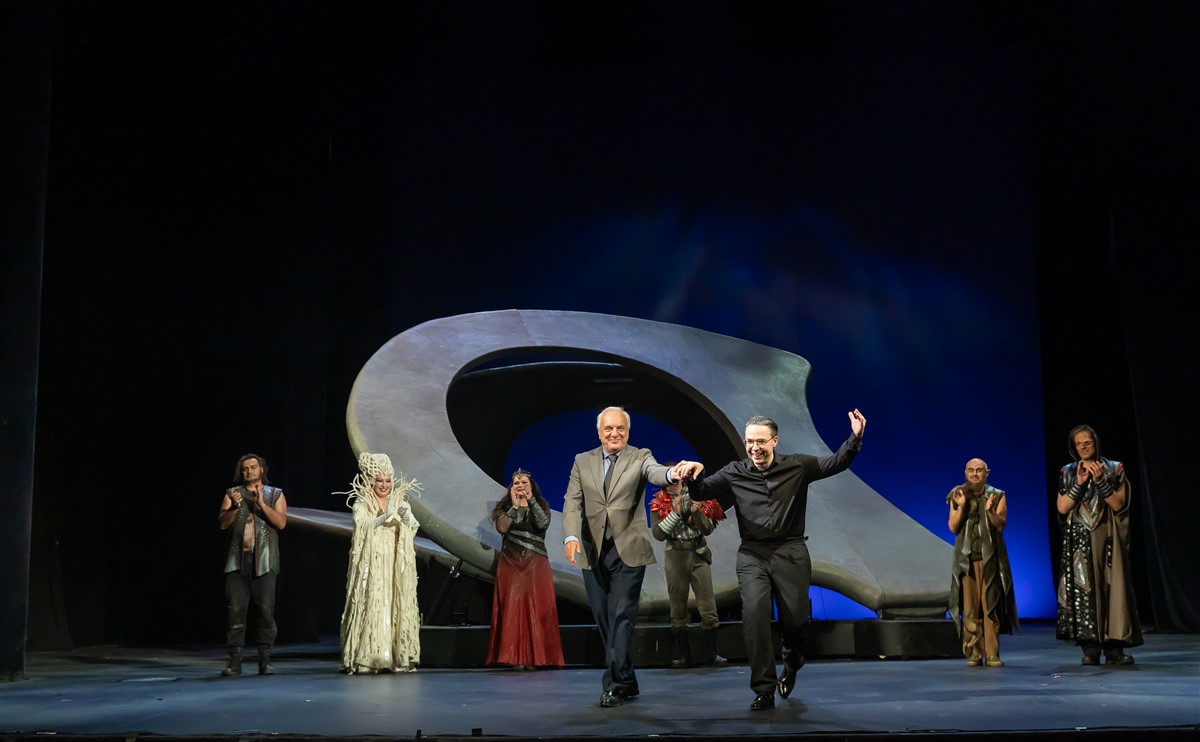“Siegfried” brought sincere joy to the audience
Last night we witnessed a moving performance at the Sofia Opera. “Siegfried”: the third opera of “Der Ring des Nibelungen” tetralogy was shown.
Before the start of the show, one could see familiar faces among the guests heartily greeting each other. The audience shared its impressions of the first three nights at the Sofia Opera and was eager to see Siegfried on stage, his bravery, thirst for great feats, heroism and the tender love he bears in his heart.
Plamen Kartaloff stayed true to himself and introduced new touches to the production, especially in the beginning. Тhe director’s prologue tracks the history of Siegfried’s birth: from him being raised as a baby by the dwarf Mime to him growing up. Plamen Kartaloff’s take on the opera makes it feel like a movie. All the scenes are connected in a storyline which flows from present events to those in the future. The characters are thought out in great detail while the artists portraying them delivered an undoubtedly great performance. The director focuses a great deal on the protagonist and his transformation from an unruly and recklessly brave young boy to the hero Brunhilde falls in love with. Kartaloff has achieved a perfect balance in this production: the scenes follow a distinct rhythm and exactly this enchanted the audience a great deal. The forest bird was an exquisite and colorful accent during the show. Hans Kudlich’s scenography, Hristiyana Zorbalieva’s costumes and Emil Dinkov’s artistic lighting created a unique and exceptional spiritual experience. The new multimedia effects by Elena Shopova could also be seen on stage through which the dreamlike and the mysterious were intertwined and enriched the vision of the performance even more.
The star of the night was Kostadin Andreev with his portrayal of Siegfried. The singer was very convincing in both his vocal and actor skills. Kostadin Andreev has been the pillar of the Sofia Opera lead singer ensemble for years and has proved on many occasions that there is nothing he can’t accomplish.
Maria Pavlova had a wonderful debut as the Forest bird and handled vocals and acting brilliantly. Maria was prepared for her performance in the air above the stage by circus artist Leonsiya Dokusova.
The rest of the main roles in this thrilling show were performed by lead singers Krisztian Cser (the Stranger), Plamen Dimitrov (Alberich), Krasimir Dinev (Mime), Petar Buchkov (Fafnir), Radostina Nikolaeva (Brunhilde) and Vessela Yaneva (Erda).
Evan-Alexis Christ and the Sofia Opera orchestra also gave a great performance and received well deserved ovations.
Continuous applause and exalted shouts filled the hall after the last accords of the show struck. The excited audience wildly expressed its admiration and love towards the artists and was grateful for what it had seen.
The last part of Wagner’s tetralogy: “Götterdämmerung“, will be shown on the 20th of June.
The Wagner Festival will close on the 23rd of June with a showing of “Lohengrin” under the conductorship of Evan-Alexis Christ and with the performance of Simon O’ Neile: the famous tenor and opera star.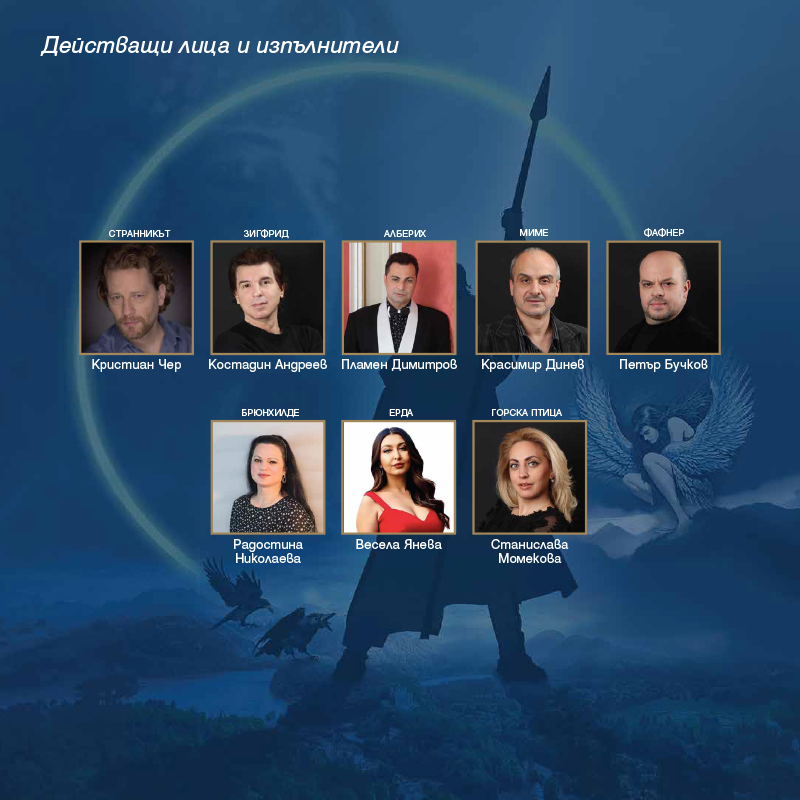
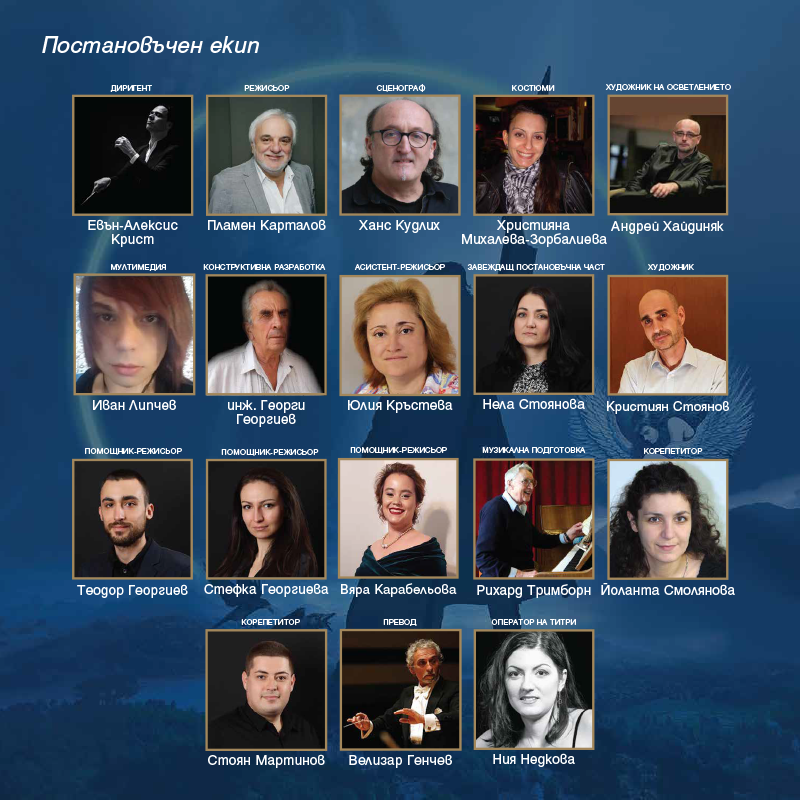
Here are the impressions of our guests after the performance.
Der Ring des Nibelungen
A festive scenic performance to be held within three days and one night
Libretto and music by Richard Wagner
First night: “Das Rheingold”; first day: „Die Walküre“; second day: “Siegfried”; third day: “Götterdämmerung“
“Der Ring des Nibelungen” intertwines complex storylines and ideas. The story of the four-part cycle unfolds on Earth, in the waters of the river Rhein, within the depths of the earth, high in the skies of Valhalla and follows the dealings of men, dwarves and gods. The cycle ends with a catastrophe of cosmic proportions which encompasses the entire Universe.
“Der Ring” is a lengthy story that persists throughout time. It tells the tale of the sacred gold which caused the destruction of a universally harmonious world. The story unfolds through the events in “Das Rheingold”, „Die Walküre“ and “Siegfried” and ends with the loss of hope for renewal of the world in “Götterdämmerung“.
Wagner began working on the libretto for “Siegfried” in 1852 and started writing the score in 1856. In May, 1857 he wrote a letter to his friend Julie Ritter:
“Even though I’ve only finished the first act of “Siegfried” this winter, it turned out better than I could ever hope for. This was a completely new experience for me. I am now convinced that “The Young Siegfried” will quickly become my most popular piece yet and that it will make all my other dramas well known, too. It looks ever more likely, however, that the entire cycle will not premiere before 1860.”
Just one month after writing this letter, Wagner wrote to his friend, composer Franz List:
“I finally decided to give up on my persistent attempts to complete my “Ring”. I took Siegfried to the beautiful forest of loneliness, left him under a linden tree and said goodbye, tears of genuine sorrow in my eyes. Siegfried is better off there than anywhere else.”
As usual, Wagner was in desperate need of money and the publisher who had agreed to get the rights to “Siegfried” and “Götterdämmerung“ had rescinded his offer. Wagner explains to List:
“And so, now I am determined to help myself. I have come up with a plan to finish “Tristan und Isolde” without any further delays. The opera is going to be easy to set and I’m going to produce it in Strasburg the following year… I’m thinking of translating this piece into Italian and offering it to the theater in Rio de Janeiro… I’m going to dedicate it to the emperor of Brazil… I believe this way I will secure a good enough amount of money so that I can be left alone for a while.”
This was an insane plan which didn’t work out in the same manner as many of Wagner’s attempts to earn money. He finished neither the sketches for “Tristan und Isolde” on time, nor the actual libretto and score. His initial idea of “leaving Siegfried alone in the forest” for a year so he could focus on writing “Tristan und Isolde” stretched out over the span of twelve years. During that time, he not only finished “Tristan und Isolde” but also reworked “Tannhäuser” for its showing in Paris while also composing “Die Meistersinger von Nürnberg”. Ludwig II, the new king of Bavaria, ascended to the throne in 1864 and became Wagner’s patron. During that time, Wagner was having an affair with List’s daughter Cosima while the latter was still married to conductor Hans von Bulow. Wagner and Cosima ended up marrying but not before causing a huge scandal in Munich which threatened to ruin Wagner’s relationship with the king.
Many years passed until Wagner finally completed “Siegfried”. When he finally got around to finishing the opera, he was no longer the same composer who began writing it. The innovative harmonic and rhythmic structures used in “Tristan und Isolde”: one of the most influential compositions in the history of music, had become a mainstay in Wagner’s creative arsenal. The finale of “Siegfried” is also innovative, different and interesting, mainly in a musical sense. The last edit of the score happened in 1871 but the opera didn’t premiere until 1876 in Bayreuth, during the first showing of the entire “Ring” cycle.
Some curious facts!
Sigurd is a legendary hero in Scandinavian mythology as well as a central figure in the “Völsunga” saga. The earliest mentions of the legends were found in the form of images on seven rune-stones discovered in Sweden. As in Sigurd’s father’s name Sigmund, the syllable “sig” is contained which means “victory” while the latter part of the name means “guardian”.
The “Völsunga” saga continues with Sigmund as the protagonist who perishes while battling Odin (Wotan) after the Norse god breaks his sword in half. Out of the sword’s remains, Siegfried forges a new blade using fire and magic and calls it Nothung.
This legend dates back to the 13th century. During that time, the saga had already become a part of the German national epos. Siegfried is the hero who fells the dragon Fafnir. It is noted that he became invincible after bathing in the monster’s blood. Only one spot on his back remained untouched by the blood and it became his only weakness. This is immediately comparable to the Greek mythology hero Achilles. The most epic transformation of these heroes happens in Richard Wagner’s tetralogy.
We also come across the name Siegfried in the history books. The “Siegfried” defense line was prepared by Germany before the start of World War II. It was a labyrinth of military fortifications, bunkers and antitank obstacles and was built along the border with France. “Siegfried” was an answer to the French “Ligne Maginot” defense line which was six hundred and thirty kilometers long and was built from 1938 to 1940, inspired from the “Hindenburg” defense line which served Germany well during World War I.
You can buy tickets for the next shows of the Sofia Opera Wagner Festival here.
